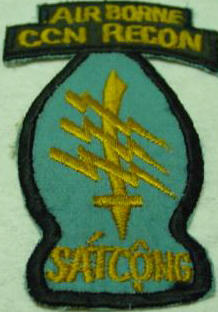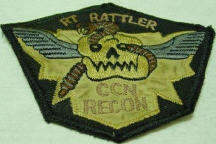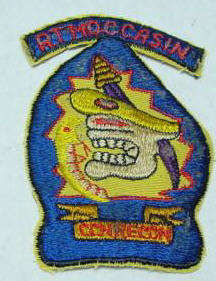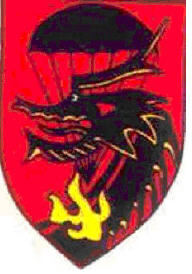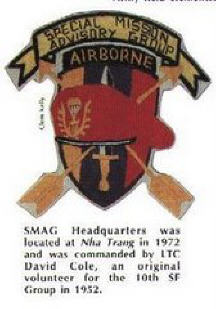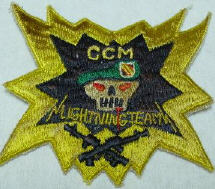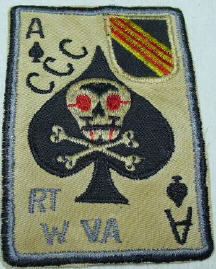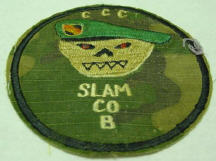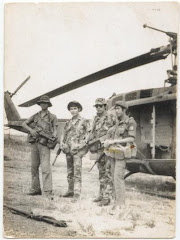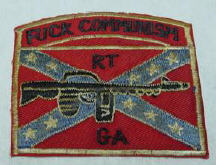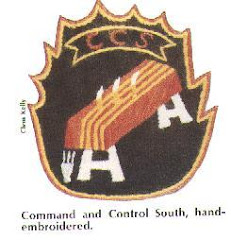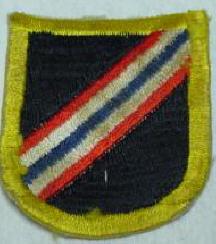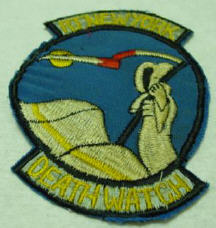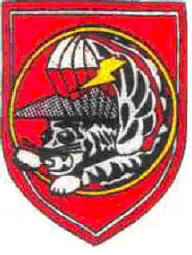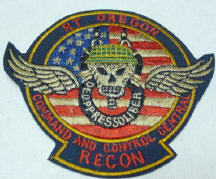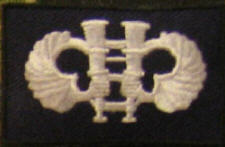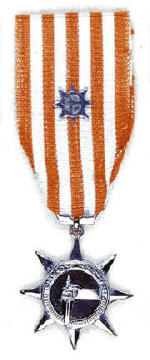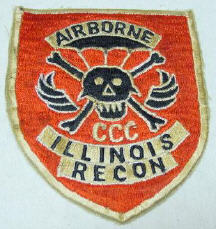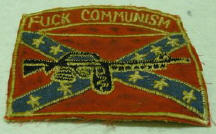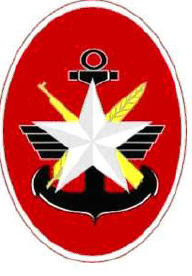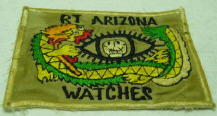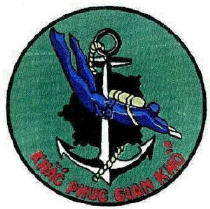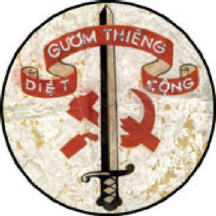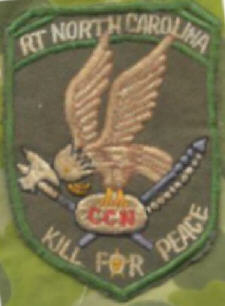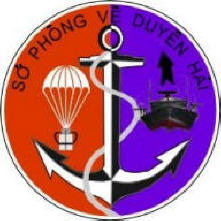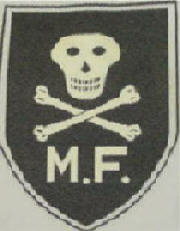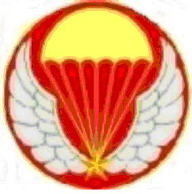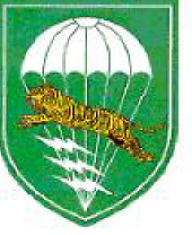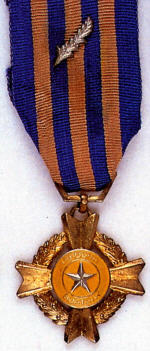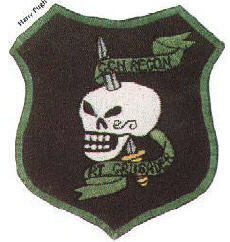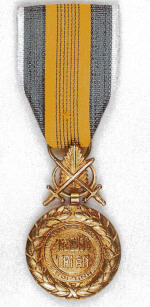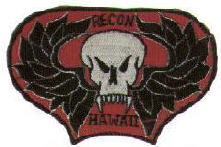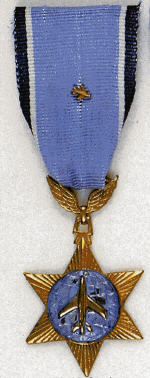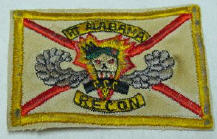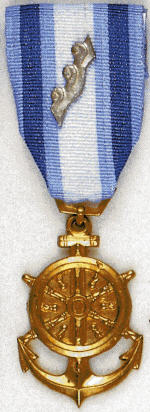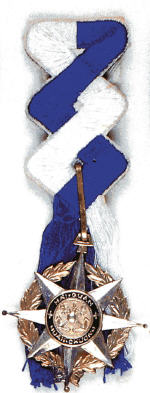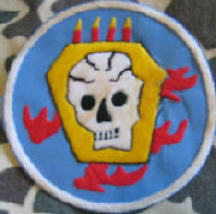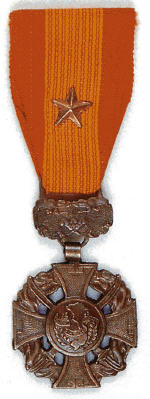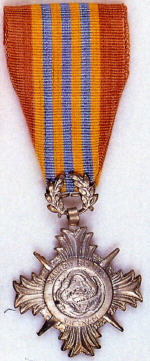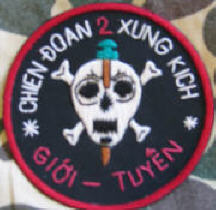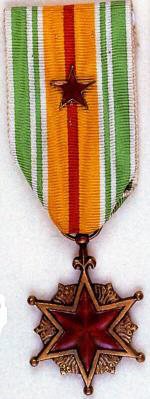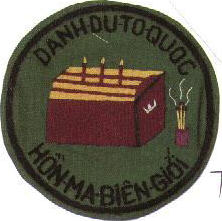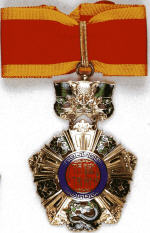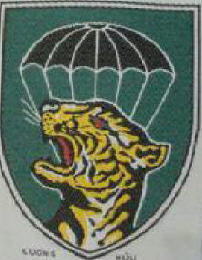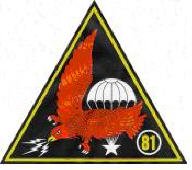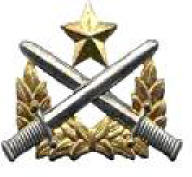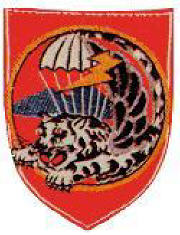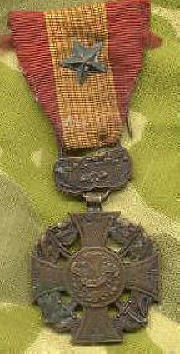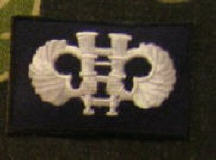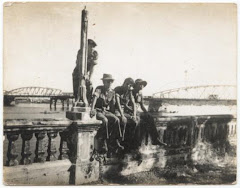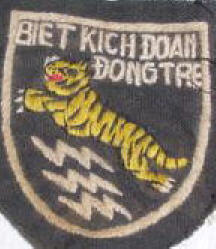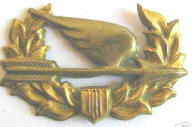 Phi vụ Biệt kích
Phi vụ Biệt kích
Vào năm 1971, phi đoàn trực thăng 219 của Không Quân VNCH, lừng danh trong giới lực lượng Đặc Biệt Việt-Mỹ phải tạm ngưng hoạt động để xuyên huấn từ trực thăng H34 qua UH1. Phi đoàn này chuyên phụ trách những phi vụ thả và bốc các toán Biệt Kích nằm trong vùng địch, dọc đường mòn HCM, có khi sâu vào biên giới Lào và Cao Mên. Là những phi công tài ba, gan dạ.Với phương châm –« không bỏ anh em, không bỏ bạn bè » họ đã chu toàn những phi vụ hiểm nghèo cho các đơn vị biệt kích, dù có hy sinh, mất mát… Vì tài ba và gan dạ, họ chính là niềm hy vọng cuối cùng đối với các toán biệt kích Việt-Mỹ trong lúc bị địch phát hiện và săn đuổi. Những lúc nguy cấp đó, các toán biệt kích rất tin tưởng ở khả năng của các phi công 219 và lên tinh thần khi thấy bóng dáng chiếc H34, vị cứu tinh của mình xuất hiện trên bầu trời… Các phi đoàn UH1, ngoài công việc hằng ngày như liên lạc, tiếp tế, tải thương, đổ quân, bốc quân, gunship hộ tống và yểm trợ tác xạ cho tất cả các đơn vị bạn của QL VNCH, nay lại được giao phó thêm nhiệm vụ đổ và bốc các toán Biệt kích thay cho phi đoàn 219 trong thời gian chuyển tiếp. Được lịnh biệt phái cho lực lượng Biệt Kích Dù đồn trú tại Quãng lợi gần thị xã An Lộc. Sáng tinh sương, khi mặt trời chưa ló dạng, Chúng tôi hai chiếc trực thăng UH1 rời Cần Thơ sát cánh nhau trực chỉ Quãng Lợi. Sau gần một giờ rưỡi bay, chúng tôi ghé phi trường Quãng Lợi, (nơi đồn trú của trung đoàn pháo binh nặng, và cũng là căn cứ trực thăng cùng tiếp liệu của Mỹ) đổ thêm xăng và về đáp tại trại lực lượng Biệt Kích Dù gần đó để túc trực làm việc cho họ… Đang ngồi bên những ly cà phê nóng tại câu lạc bộ cuả trại, người thì chúi mũi vào tờ báo, kẻ khác thả hồn mình lãng đãng theo khói thuốc, chúng tôi giật mình vì tiếng trực thăng ầm ỹ trên đầu. Qua khung cửa kính lờ mờ đầy bụi đỏ, hai chiếc Cobra gunship của Mỹ cũng từ phi trường Quãng lợi đến và đang đáp gần hay chiếc UH1… Tiên đoán trưa nay thế nào cũng có phi vụ cho biệt kích, trong lòng bỗng thấy hơi hồi hộp, tò mò, vì đây là phi vụ đầu tiên, đặc biệt và hoàn toàn mới lạ đối với chúng tôi. Từ lối điều quân bí mật, bất ngờ, nhanh và gọn của biệt kích đến lộ trình bay, bãi đáp đều không giống như cách thức thường làm khi yểm trợ cho các đơn vị bộ binh mà từ bao năm nay chúng tôi đã hằng ngày áp dụng. Cho nên tuy bề ngoài bình thản nhưng trong lòng chắc ai cũng có riêng mình một chút bâng khuâng… Như dự đoán, một Thiếu úy Biệt kích Dù đến mời chúng tôi xuống phòng hành quân để họp. Có mặt tại phòng HQ là vị Đại úy trưởng trại, Thiếu úy thuyết trình viên, hai phi hành đoàn Mỹ và chúng tôi. Thiếu úy thuyết trình viên trông rất thư sinh, đẹp trai, ăn nói hòa nhã và vui vẻ. Tôi không thể ngờ ông sĩ quan trẻ tuổi này lại đại diện cho một đơn vị dữ dằn, cảm tử, chuyên đi vào lòng đất địch, cái chết và sự tra tấn dã man mà địch sẽ dành cho mình lúc nào cũng rình rập một bên!!! Tôi thật sự có cảm tình và khâm phục đơn vị này. Phần thuyết trình đại khái cho biết đơn vị mà chúng tôi sẽ bốc gồm bốn người, trưởng toán là một Thiếu úy. Tất cả đều bận quân phục của lính chính quy Bắc Việt, trang bị súng AK 47 của CS, chỉ có khác là thay vì đi dép râu thì họ lại xử dụng giày của quân đội VNCH, mang nhiều bidon nước và lựu đạn mini… Họ dặn chúng tôi khi tới đón toán, nếu thấy khói trắng là bãi đáp an toàn, khói đỏ thì phải lập tức bay đi để bảo đảm sự toàn vẹn cho họ lẫn phi hành đoàn. Ban ngày có mặt trời, họ dùng kíếng phản chiếu, ban đêm họ dùng đèn chớp làm hiệu để đánh dấu vị trí. Chúng tôi, các phi công Mỹ và Thiếu úy Biệt kích trao đổi tần số làm việc với nhau. Danh hiệu chúng tôi là Eagle, Mỹ là Playboy, phi cơ hướng dẫn là Spartan. Họ cũng không quên nói rằng điạ điểm bốc biệt kích sẽ được giữ kín cho đến khi chúng tôi lên trời và sẽ được Spartan hướng dẫn. Chúng tôi và phi công của hai chiếc Cobra sau khi thử tần số liên lạc với nhau, lần lượt cất cánh. Phi cơ VNAF bay hợp đoàn dẫn đầu và hai chiếc Cobra Mỹ theo sau, làm vòng chờ ở bốn ngàn bộ ngay trên căn cứ Quãng Lợi. Đúng giờ hẹn, một giọng khàn khàn vang lên trong nón bay và chúng tôi bắt đầu đối thoại: - Eagle 1, this is Spartan, how do you read me - over - This is Eagle 1, I read you loud and clear- over - Eagle 1, I will present myself by flying in front of you, and shaking my wings - over Sau khi thấy chiếc Spartan ở phiá trước đang lắc cánh, tôi bấm máy trả lời - Spartan this is eagle 1, I have you in sight - over Khi nghe như vậy chiếc Spartant quẹo gắt và biến mất về phía sau. - Eagle 1 this is Spartan,I will guide you to the LZ -over - Roger that, tôi trả lời - Eagle 1 this is Spartan, heading 280 at 2000 feet -over - Roger, heading 280, at 2000 feet Trả lời xong,tôi giảm cao độ và nhờ co-pilot đổi qua tần số nội bộ để gọi chiếc số hai - Hai đây một gọi - Hai nghe, nói đi - Tôi sẽ bay theo sự hướng dẫn của Spartan, bạn theo tôi nhưng giữ cao độ 3000 bộ, làm vòng chờ lúc tôi đáp, quan sát tình hình bãi đáp,nghe rõ không trả lời? - Hai nghe năm Tôi cho tàu bình phi ở 2000 bộ, cơ phi và xạ thủ báo cáo là hai Cobra Mỹ lúc nào cũng theo xa xa…mặc đù họ bay nhanh hơn chúng tôi. Chúng tôi giữ yên lặng vô tuyến, đúng hướng bay và cao độ ấn định vào khoảng mười phút thì tiếng cuả Spartan lại khàn khàn vang lên chậm rải,rõ ràng: - Eagle 1 this is Spartan, at one o’clock position, one mile away, do you see an opening in the jungle and the reflecting of a mirror in that opening? - That is your LZ - over. Nhìn về hướng một giờ, thấy ánh chớp nhấp nháy,tôi bèn trả lời. - Roger,I have the LZ in sight Tiến đến gần hơn,tôi thấy một khoảng trống bằng cái sân đá banh và có chiều dài kha khá, cỏ tranh úa vàng và chung quanh là rừng cây xanh không rậm rạp lắm. Ở giữa đám cỏ tranh lấp lánh ánh phản chiếu của tấm kíếng mà biệt kích đang xử dụng để đánh dấu bãi đáp cho tôi. Nãy giờ các pilots của mấy chiếc Cobra vẫn theo dõi cuộc đàm thoại giữa tôi và chiếc Spartan nhưng họ giữ im lặng. Bây giờ lead Cobra mới lên tiếng gọi - Eagle 1 this is Playboy 1- over - Playboy 1 goes ahead, tôi trả lời - Sir, after you lift-off, go straight forward do not turn left or right, we will shoot on both sides of the jungle - over - Roger that, take off straight forward, thank you Sir. Tôi trả lời Tôi giảm nhanh cao độ và gọi số hai - Hai đây một - Hai nghe nói đi Tôi bắt đầu decend, bạn giữ 3000 bộ trên bãi đáp - Hai nghe 5 Tự biết khả năng bay bổng tầm thường của mình, và vì chưa có kinh nghiệm bay cho Biệt kích nên tôi chọn cách approach nào hợp với mình nhất.Tôi mừng thầm là rất may mắn có cái LZ trống trải như hôm nay thì đỡ phải vật lộn với con tàu.Cho nên dù có đáp hay cất cánh theo chiều dài của cái khoảng trống với tốc độ cao, tail wind nhẹ thì cũng không sao... Tính toán như vậy, tôi bèn đổi hướng một tí để line up tàu với chiều dài của khoảng trống.Tôi vào cận tiến thật nhanh và giảm cao độ thật lẹ, nhắm hướng nhấp nháy của tấm kíếng phản chiếu nhào tới, tôi flair phi cơ tối đa và đáp ngay trên anh chàng chiếu kiếng làm chàng ta phải chạy dạt sang bên và phóng lên đầu tiên khi tàu vừa chạm đất. Tôi thấy thấp thoáng vài bóng mặc quân phục chính quy BV xách AK chạy thật nhanh từ bìa rừng về phía phi cơ, dù đã đươc biết trước về quân phục và trang bị của biệt kích nhưng chúng tôi cũng không khỏi giật mình vì chưa quen với cảnh này, tuy nhiên mấy chàng xạ thủ trực thăng với hai cây đại liên M60 lúc nào cũng hờm sẵn để nhả đạn nên chúng tôi cũng tạm an tâm.Thoắt một cái, tất cả đã lên tàu, không chần chờ một giây, tôi nhất bổng tàu lên và chúi mũi về phiá trước để lấy tốc độ cất cánh. Khi bụng phi cơ vừa lướt trên ngọn cây thì cũng là lúc hai chiếc Cobra nhào xuống phóng vài rocket nổ ầm ầm và các cây Garling guns tuôn ra mấy ngàn viên đạn một phút nghe như bò rống bắn chụp lên hai bên bìa rừng. Xạ thủ đại liên M60 của tàu chúng tôi cũng bắn chát chúa xuống rừng cây trên đường bay ra. Hoạt cảnh ồn ào và linh động giống như một đoạn phim của Hollywood. Tôi rũa thầm mấy tay Playboy này bắn rocket gần quá coi chừng tàu trúng miễng thì bỏ mẹ cả lũ ! Lấy cao độ thật nhanh và bình phi ở 3000 bộ, Tôi gọi số hai. - Hai đây một gọi - Hai nghe - Hai đang ở đâu? - Ba giờ của một, 3000 bộ Nhìn qua hướng ba giờ thấy số hai đang bay về phía tôi. Chúng tôi ráp vào nhau lấy hướng căn cứ biệt kích trực chỉ... Hai chiếc Cobra từ xa bay vào kè sát với chúng tôi, pilot bên chiếc Cobra lead đưa ngón tay cái lên và tiếng của họ vang lên: - Eagle 1, this is play boy 1 - Go ahead, playboy 1, tôi trả lời - Job well done eagle 1, good luck and good bye, Sir - Same to you, thank you and good bye, Sir Hai chiếc Cobra tách ra và xa dần chúng tôi. Trên đường về, trưởng toán biệt kích râu ria lởm chởm trao cho tôi điếu thuốc và châm lửa dùm. Rít một hơi dài, tôi cảm nhận điếu thuốc Quân tiếp vụ của lính sao quá đậm đà, cái đậm đà của tình chiến hữu, của sự trở về bình an và của khí trời thanh cao, mát mẻ… Nhờ co-pilot lái hộ tàu, tôi ngồi hút thuốc và nghỉ về phi vụ của chúng tôi sao lại quá dễ dàng, chẳng có một tí hiểm nguy nào rình rập… Vậy mà các bạn tôi, những phi công tài hoa, những phi hành đoàn kinh nghiệm lại bị những viên đạn thù đốn ngã, tan xác cùng con tàu định mệnh, đi không ai tìm xác rơi hoặc cháy thành tro bụi hoặc bị thương tật, tàn phế suốt đời ! Phải chăng là do định mệnh, hoặc nhờ may mắn mà tôi chưa bị lọt vào ổ phục kích hay nhận lãnh những viên đạn thù như chúng bạn? Đời bay bổng còn dài… ngày mai nào ai biết ra sao, que sera..sera ? Cali
VÀI NÉT VỀ TIỂU SỮ CỦA ĐẠI ÚY WARREN ORR Jr.Đại Úy Warren Orr Jr, sinh ngày 20 tháng 3 năm 1943, tại thành phố West Frankfort, Tiểu bang Illinois. Thân phụ ông Warren Orr Sr, là một cựu quân nhân từng tham dự Thế Chiến Thứ Hai khi ông vừa chào đời được một tháng. Ông lớn lên tại một thị trấn nhỏ năm 1961, ông tốt nghiệp trường Trung Học Kewanee. Năm 1963 chỉ còn một tháng để tròn 20 tuổi , ông quyết định lên đường nhập ngũ, và gia nhập binh chủng Không Quân Hoa Kỳ tại thành phố Peoria. Warren Orr Jr, trở thành một trong những người Cố Vấn Quân Sự Hòa Kỳ đầu tiên được gởi đến Việt Nam vào thời kỳ Tổng Thống Kennedy. Sau đó, ông tái tình nguyện lần thứ hai để tham chiến tại Việt Nam. Năm 1968, Ông là Đại Úy Lực Lượng Đặc Biệt Mũ Xanh Hoa Kỳ (Gren Beret) Sỉ Quan Đặc Trách Dân Sự Vụ thuộc Đại Đội C, Liên Đoàn 5 Lực Lượng đặc Biệt.Vào cuối tháng Ba 1968, Tình Báo Hoa Kỳ phát hiện tin tức Công Trường 2 Bắc Việt với một lực lượng hơn 10,000 người, di chuyển từ Bắc vào miền Nam xuyên qua Lào, về phía Nam qua cửa ngõ thị trấn Khâm Đức, thuộc tỉnh Quảng Tín, tiến về Thị Xã Đà Nẳng.Khâm Đức, nằm về phía Tây tỉnh Quảng Tín, vào mùa Xuân năm 1968 chỉ có một tiền đồn do Lực Lượng Đặc Biệt Việt Nam Cộng Hòa thuộc Quân Đoàn I trấn giử, cách thị xã Đà nẳng 46 dặm về phía Tây Nam, trong một vùng đồi núi hiểm trở, không có dân cư sinh sống. Trại Lực Lượng Đạc Biệt nầy nằm chơi vơi giữa hai triền núi Ngok Peng Bum và Ngok Pe Xar, trong trại có một phi trường nhỏ trước đấy vốn là một đồn của lính Pháp để lại.Để theo dỏi việc chuyễn quân của Công Trường 2 Cộng Sản, Trại gởi ra một toán trinh thám gồm 3 sĩ quan tình báo người Úc và một nhóm Lực Lượng Đặc Biệt Người Nùng đóng tại triền núi Ngok tavak, giữa biên giới Việt Lào và Trục Lộ 14.Bộ Tư Lệnh Công Trường 2 Bắc Việt không thể nào tiến vào Đà Nẳng mà không đi ngang qua nút chặn Ngok Tavak và Khâm Đức. Vào Chạng vạng ngày 10 tháng 5, 1968, Công Trường này quyết định tấn công Ngok Tavak, cùng lúc vào 2 giờ 45 sáng, quân Bắc Việt đã tấn công vào trại Lực Lượng Đặc Biệt Khâm Đức mỡ đầu với những cuộc pháo kích khốc liệt.Trận chiến kéo dài trong 2 ngày trong sự chênh lệch về quân số, với sự chống trả oanh liệt của các chiến sĩ Lực Lượng Đặc Biệt và đồng minh Hoa Kỳ, Úc đại Lợi, 19 quân nhân Hoa Kỳ bị bắt và trở thành Mất Tích hoặc Chết khi Chiến Đấu/ Thi Hài Không Tìm Được. Kết cục, không một người nào sống sót mặc dầu lệnh di tãn và rút lui đã được ban hành.Vào lúc 1 giờ trưa ngày 12 tháng 5 năm 1968, mặc dầu có lệnh di tãn toàn bộ quân lính và thân nhân của trại Khâm Đức nhưng trước sự pháo kích tàn khốc của Cộng Quân, cuộc di tãn đã xảy ra trong một tình trạng tuyệt vọng.Để giúp di tản thân nhân của những quân nhân trọng tại, một vận tãi cơ C130B ( số hiệu #60-0297) từ căn cứ Mactan, Phi Luật Tân bay đến Khâm Đức. Phi Hành Đoàn gồm có 5 người do Thiếu tá Bernard Bucher, Phi hành trưởng, Thiếu Úy Stephen Moreland, Phó Phi Hành, Thiếu Tá John McElroy chuyên viên không hành,Thượng Sĩ Frank Hepler, chuyên viên cơ khí, và Hạ Sĩ George Long , chuyên viên vận tãi. Ngoài trên máy bay còn có Đại Úy Warren Orr , Jr., thuộc LỰc Lượng Đặc Biệt với nhiệm vụ di tãn càng nhiều càng tốt những thân nhân của các người lính tại trại Khâm Đức. Chiếc máy bay C130 đáp xuống phi đạo của trại trong một khung cảnh náo loạn của chiến trường.Sau khi đón được vào khoãn 150 trẻ em và phụ nữ Việt Nam , vợ con của những người lính trong trại, chiếc máy bay đả nổ tung sau khi vừa mới cất cánh được giây phút vì bị trúng đạn pháo kích. Theo báo cáo của máy bay quan sát, phi cơ rơi xuống cánh rừng cách phi đạo chừng một dặm.Mọi người trên máy bay được coi như đã tử nạn, tuy nhiên trường hợp của Đại Úy Orr, thoạt đầu không ai biết chắc là ông có mặt trên chuyến bay hay còn ở lại dưới đất. Bởi vì không còn một ai là nhân chứngVào ngày 18 đến ngày 21 thang 7 năm 1970 và những ngày 17 đến 20 tháng 8 năm 1970, những nỗ lực tìm kiếm hài cốt các quân nhân Hoa kỳ tai Khâm Đức đã không tìm được vết tích của chiếc máy bay C130B, vì bị che lấp bởi cây cối và Khâm Đức lúc đó nằm trong sự kiểm soát của Cộng Sản.Mãi cho đến năm 1994, khi những dân làng địa phương bắt đầu bán những mãnh sắt vụn của phi cơ trộn lẫn với xương. Lúc đó việc tìm lại được vết tích và hài cốt của phi hành đoàn Hoa Kỳ mới được xác nhậnNhân viên Ngũ Giác Đài tại Hoa Thịnh Đốn đã cho thân phụ của ông là Warren Orr,Sr., biết là có 6000 mãnh xương cùng với nhiều di vật khác đã được thu hồi tại chổ máy bay rớt, và phải tốn nhiều năm mới có thể nhận diện tông tích của những người quá cố.Lúc ban đầu người cha đã không tin tưởng vào những lời hứa này, bởi vì trong quá khứ nhiều gia đình đã được trao trả hài cốt không đúng thân nhân của họ. Tuy nhiên khi ông nhận được những bằng chứng thử nghiệm DNA và ông tin thật đây là hài cốt cũa đại úy Orr. Người cha đã mãn nguyện và an tâm tìm lại được sự bình an trong tâm hồn.Bà Mary Orr, mẹ của người sĩ quan anh dủng này qua đời không lâu sau khi được tin con mình mất tích tại Việt Nam. Ông còn một người em trai, Gregory Orr hiện sống tại Santa Ana, Quận Cam.Tháng 11 tới, Đại Úy Orr sẽ được an táng với đủ lễ nghi quân cách tại Nghĩa Trang Quốc Gia Arlington, Virginia. Một buổi lễ truy điệu cho ông và 5 phi hành Đoàn của chiếc C130 sẽ được cử hành tại đây.Trước đó vào ngày thứ Bảy 27 tháng 10, 07, một buổi lễ truy điệu long trọng tại Đài Tưởng Niệm Việt Mỹ Westminster, do Giám Sát Viên Janet Nguyễn , cộng đồng người Việt và những người cựu quân nhân Việt Nam Cộng Hòa tổ chức. Một quốc Kỳ Việt Nam Cộng Hòa sẽ được trao tặng cho gia đình ông để biểu lộ lòng biết ơn của cộng đồng Việt Nam đối với một người đã anh dủng hy sinh cho lý tưởng tự do.
HÀNH-QUÂN BIỆT-KÍCH
Năm Khói-Lửa 1968
- Mở Đầu
Đầu năm 1968, Khe-Sanh là một trại biên phòng Lực-Lượng Đặc-Biệt. Đơn vị SOG xử dụng trại này làm căn cứ hành-quân tiền-phương. Nơi đây trở nên tiền đồn bảo vệ phía tây vùng phi-quân-sự. Trong căn cứ có 6000 quân thuộc trung-đoàn 26 TQLC/HK và tiểu-đoàn 37 Biệt-Động-Quân QL/VNCH. Bên ngoài có sự hiện diện của 20000 quân cộng-sản Bắc-Việt. Tất cả mọi hỏa lực đều tập trung xung quanh căn cứ, pháo binh, phi cơ, kể cả B-52 yểm trợ ngày đêm. Sự có mặt, cũng như hành quân vượt biên của đơn vị SOG được bảo mật, không ai biết đến.
- Phần 2
Bên trong Khe-Sanh, đơn vị SOG gồm 50 quân nhân LLĐB/HK và khoảng 500 Dân-Sự Chiến Đấu sống dưới hầm cũng như binh-sĩ TQLC/HK chịu đựng 1500 quả đạn đại-bác, súng cối của địch bắn vào căn cứ hàng ngày. Bên ngoài Khe-Sanh, trên những ngọn đồi, tử thần rình rập, các toán biệt-kích SOG phát xuất từ căn cứ hành quân tiền phương 1 (FOB 1) ở Phú-Bài, xâm nhập tìm mục tiêu cho phi cơ oanh-kích, đặt máy nghe lén điện thoại, và đặt máy dò thám điện tử.
Nơi hướng tây căn cứ Khe-Sanh bên kia biên giới Lào-Việt, các toán biêt-kích SOG khác phát xuất từ 'cửa hâu' của đơn vị SOG, phi trường Nakhon Phanom (NKP) bên Thái-Lan. Tại đây, SOG có bẩy nhân viên làm việc với phi-đoàn 21 'Pony' Hành-Quân Đặc-Biệt thuộc Không-Lực Hoa-Kỳ, đơn vị anh-em của SOG phi đoàn 20 Green Hornets. Từ tháng Giêng 1967, Ponies yểm trợ cho các toán biệt-kích SOG hoạt động ngoài miền Bắc Việt-Nam, các hoạt động của cơ-quan CIA bên Lào và đến cuối năm thả các toán biệt-kích SOG xâm nhập vào đất Lào. Căn cứ bên Thái-Lan trở nên quan trọng từ đầu năm 1968 khi trực thăng của SOG không hoạt động được trên phi đạo bên trong căn cứ Khe-Sanh.
Một trong những mục tiêu thường xuyên của SOG bên Lào là rặng núi Cơ-Rốc, cao 1800 bộ về hướng tây Khe-Sanh, quân Bắc Việt, đào hầm hố, đục đá núi làm đường chuyển quân. Ngày 12 tháng Giêng năm 1968, toán biệt-kích Indiana bị phục kích trên một sườn núi. Toán chạy lạc, phân tán, toán phó là Trung-Sĩ Jim Cohron cùng hai biệt-kích Nùng tách rời khỏi toán. Phần còn lại chạy đến được một con đường mòn, tìm cách liên lạc với Cohron. Nhóm này thoát, còn nhóm Cohron mất tích.
Tình báo Hoa-Kỳ cho rằng, toán Indiana đụng phải trung-đoàn 'Đồng Nai' CSBV. Hệ thống kiểm thính bắt được tần số của địch cho biết Cohren bị địch bắt và bị hỏi cung. Cho đến nay, Hà-Nội vẫn trả lời không biết gì về người lính Mũ-Xanh Hoa-Kỳ, quê quán ở tiểu bang Iowa.
Cách căn cứ Khe Sanh năm dặm về hướng tây, trong bóng của rặng Cơ-Rốc bên kia biên giới là trại LLĐB Lang-Vei do Đại-Úy Frank Willoughby chỉ huy. Do áp lực của quân đội Bắc Việt vào đầu năm 1968, 282 quân biệt-kích người Thượng được tăng cường thêm một đại đội biệt kích Thượng và quân Mũ-Xanh Lực-Lượng Đặc-Biệt Hoa-Kỳ.
Phần còn lại của toán Indiana đến trại LLĐB Lang-Vei một buổi tối cuối tháng Giêng sau nhiều ngày bị địch săn đuổi trên ngọn núi Cơ-Rốc. Trưởng toán Rick Bayer thông báo cho người hạ-sĩ-quan LLĐB của trại Bill Craig rằng: Toán biệt-kích Indiana trông thấy dấu xích xe-tăng của địch! Thêm điều nữa, trong khi đi ngang qua sông Xe-Kong lúc trời xập tối, toán biệt-kích trông thấy quân Bắc Việt thăm dò mực nước sông và đánh dấu bãi chuẩn bị hành quân vượt sông. Bayer không hoài nghi chuyện quân đội Bắc Việt sẽ đem xe tăng vào chiến trường miền Nam.
Khi được đưa vào Saigon để báo cáo, Trung-Sĩ Bayer nhớ lại 'Họ cho tôi là thằng nói dóc!'. Cấp chỉ huy của anh ta trong FOB 1, Thiếu-Tá Ed Rybat cũng mất mặt không kém. 'Tụi tôi gửi báo cáo về, họ trả lời rằng không có gì hết, đó là dấu xe ủi đất'. T ôi đã phục vụ trong đơn vị Thiết-Giáp trước đây, tôi bìết thế nào là dấu xích xe tăng. 'Đó là dấu thiết vận xa lội nước PT-76 của địch'. Trong Saigon, trùm đơn vị SOG là Đại-Tá Singlaub tin rằng quân Bắc Việt chuẩn bị xe-tăng để tấn công. Bộ Chỉ-Huy Quân Viện Hoa-Kỳ MACV bỏ qua lời báo động của ông ta.
Vừa quá nửa đêm ngày 6 tháng Hai, binh sĩ TQLC nơi giao thông hào phiá tây căn cứ Khe-Sanh nghe tiếng động cơ theo gío đưa tới, nghe như tiếng cưa máy - Xe Tăng! Trong trại LLĐB Lang-Vei, mặt đất rung chuyển khi mười một chiến xa PT-76 cùng một tiểu đoàn bộ-binh Bắc Việt được pháo binh 152 ly yểm trợ tràn vào trại. Đại bác 76 ly trên chiến xa bắn xập các pháo đài bên trong. Hơn nửa Dân Sự Chiến Đấu Thượng chết tại vị trí chiến đấu, sau khi bắn hết đạn súng Carbine, đại liên vào các chiến xa đang tiến tới của địch. Lính Mũ-Xanh Hoa-Kỳ dùng súng cối 106 ly tiêu diệt hơn nửa số PT-76.
Trùm đơn vị SOG thông báo về vụ tấn công trại LLĐB Lang-Vei cho cơ-quan MACV, vị tướng trưởng phòng Nhì cơ quan vẫn từ chối không tin. 'Làm gì có xe tăng ở Việt-Nam'. Trong khi trận đánh nơi Lang-Vei vẫn đang tiếp diễn, đơn vị SOG trong Khe-Sanh chuyển lời cầu cứu của trại LLĐB cần viện binh. Đại-tá David Lownds chỉ huy trưởng căn cứ Khe-Sanh từ chối ' Tôi không muốn hy sinh sinh mạng người Hoa-Kỳ'. Biệt-kích SOG kể rằng 'Ông ta liếc qua tụi tôi chớp nhoáng như máy quang tuyến, rồi khước từ một cách dã man'.
'Đúng vậy, chúng tôi có thoả thuận rằng sẽ đi tiếp cứu trại LLĐB Lang-Vei trong trường hợp căn cứ này có thể bị dứt điểm' Thiếu-Tá Jim Stanton, sĩ quan điều hợp pháo-binh TQLC trong căn cứ Khe-Sanh đã xác định bằng lời nói trên. 'Tình trạng chiến đấu trong căn cứ đã xuống thấp, không ai dám bảo đảm vấn đề an-toàn cho họ'.
- Phần 3
Sĩ-quan tùy viên cho tướng Westmoreland đánh thức ông ta dậy hai lần trong đêm cho biết trận tấn công trại LLĐB Lang-Vei. Đại-Tá Francis Kelly, chỉ huy trưởng Liên-Đoàn 5 LLĐB/HK yêu cầu ông gửi quân tiếp viện cho Lang-Vei, nhưng tướng Westmoreland ngần ngại ra lệnh cho bộ tư-lệnh TQLC/HK. Cá nhân tướng Westmoreland xem chuyện từ chối không tiếp viện cho trại LLĐB do sự mâu-thuẫn giữa bộ chỉ huy MACV của ông ta và bộ tư-lệnh TQLC/HK. Ông ra lệnh triệu tập một buổi họp với các vị tướng lãnh TQLC/HK tại Đà-Nẵng sáng hôm sau.
Trong trại LLĐB Lang-Vei, quân Bắc Việt đã hoàn toàn làm chủ tình hình. Sĩ quan quân đội Bắc Việt ra lệnh tất cả quân nhân LLĐB/Việt-Mỹ mở cửa hầm chỉ huy và ra đầu hàng. Sĩ-quan Việt-Nam ra trình diện dường như bị bắn tại chỗ. Quân Bắc Việt dùng chất nổ phá cửa hầm, sức nổ làm tám quân Mũ-Xanh Hoa-Kỳ bất tỉnh.
Đến Đà-Nẵng, Tướng Westmoreland ra lệnh cho Trung-Tướng Robert Cushman cung cấp trực thăng đưa một đơn vị cấp cứu SOG trong căn cứ Khe-Sanh vào Lang-Vei ngay tức khắc. Sau này tướng Westmoreland biết được lệnh của ông ta không được thi hành. Ông ta viết 'Đó là điều xẩy ra trong thời gian tôi phục vụ tại Việt-Nam. Chuyện đó làm tôi muốn xin về hưu'.
Tại Khe-sanh, Thiếu Tá George Quamo, Thượng-Sĩ Charles 'Skip' Minnicks có thể nhìn thấy khói bốc lên từ trại LLĐB Lang-Vei. Quamo nói về sự nguy-hiểm đang chờ đợi họ, và hỏi 'Ai muốn đi?'. Một tá lính Mũ-Xanh Hoa-Kỳ xách tiểu-liên CAR-15, tập họp ba mươi biệt-kích Nùng, Thượng rồi leo lên trực thăng TQLC/HK ra đi.
Sự thờ-ơ của TQLC ảnh hưởng viên phi công lái trực thăng, không nhiệt tâm đi cứu. Kinh hoàng trông thấy xe tăng cháy, doanh trại đổ nát ở dưới, mất tay phi công CH-46 lái bay vòng vòng trên không. Cuối cùng Thiếu-tá Quamo ra lệnh 'vào' lúc đó họ mới hạ cánh.
Xuống tới đất, toán biệt-kích SOG, chia ra lục xoát các hầm hố, công sự phòng thủ tìm người sống sót. Hàng ngàn quân Bắc Việt trú ẩn xung quanh Lang-Vei sợ không-lực Hoa-Kỳ oanh-kích không tấn công tiếp. Hầu hết người Hoa-Kỳ sống sót nhờ Trung-Sĩ Nhất Eugene Ashley, chết sáng hôm đó trong những đợt phản công đẩy lui quân cộng sản ra khỏi Lang-Vei. Anh ta được ân thưởng huy chương Danh-Dự cao qúy nhất của chính phủ Hoa-Kỳ. Vài lính Mũ-Xanh Hoa-Kỳ thoát nhờ Thiếu-Úy Qúy lái xe Jeep xông vào trại đem họ đi.
Toán biệt-kích SOG gom tất cả những biệt-kích Hoa-Kỳ sống sót và đem thêm với khả năng của họ những biệt-kích quân Thượng bị thương ra bãi đáp chờ trực thăng bốc. Khi đoàn tầu bay lên, trưởng toán Alabama John Allen trông thấy một quân nhân Hoa-Kỳ chạy ra bãi đáp vẫy tay. Không thể quay trở lại, anh ta bị bỏ rơi cho số mệnh. Người biệt kích Hoa-Kỳ đó tên là Dennis Thompson, bị tù năm năm trước khi được trả tự do. Trong số hai mươi bốn quân nhân biệt-kích Hoa-Kỳ ở trại LLĐB Lang-Vei, Thiếu-Tá Quamo đem về được mười bốn, trong đó có một bị thương.
Đơn vị SOG đóng góp trong trận bao vây Khe-Sanh, cũng là thành quả lớn nhất của họ thâu thập bên Lào trong năm 1968, khám phá được căn cứ lớn, bộ chỉ huy, kho chứa đạn dược của địch gần rặng núi Cơ-Rốc. Phi vụ B-52 Arc Light được lệnh tiêu hủy mục tiêu này kết qủa gây ra nhiều tiếng nổ phụ trong vòng hai tiếng đồng hồ. Trong nhật ký của tướng Westmoreland, ông ta tin rằng trận đánh bom B-52 trúng bộ chỉ huy đầu não của địch trong trận bao vây Khe-Sanh. Hệ thống truyền tin của địch bị mất liên lạc trong vòng hai tuần lễ, chứng tỏ có sự bối rối trong hệ thống chỉ huy của địch, do đó quân Bắc Việt không mở trận tấn công lớn vào căn-cứ Khe-Sanh trong kỳ Tết Mậu-Thân.
Cuối tháng Ba, trong khi sư-đoàn 1 Không-Kỵ Hoa-Kỳ bắt đầu hành quân giải tỏa áp-lực của địch xung quanh căn cứ Khe-Sanh. Toán biệt-kích Asp xâm nhập khu vực cách Khe-Sanh 25 dặm về hướng tây bắc, theo dõi sự triệt thoái của các đơn vị Bắc Việt. Trưởng toán Asp là Trung-Sĩ Nhất George Brown, có Trung Sĩ Charles Huston và Alan Boyer. Toán Asp bị một đơn vị lớn của địch tấn công bất thần.
Một chiếc Kingbee vào cứu Brown và Huston bị hỏa lực địch bắn vào không được. Một chiếc Kingbee khác trông thấy Alan Boyer, thả thang dây xuống cứu anh ta, đạn bắn đứt thang dây, anh này rơi xuống vào giữa địch quân. Tất cả đều mất tích.
Hai trăm lẻ năm TQLC Hoa-Kỳ tử trận trong bẩy mươi bẩy ngày bao vây căn-cứ Khe-Sanh. Thiếu-Tá Quamo chỉ huy cuộc cứu nguy trại LLĐB Lang-Vei, lên máy bay của đơn-vị SOG bay về Đà-Nẵng. Chiếc máy bay cũng biến mất luôn vì thời tiết xấu. Xác Thiếu-Tá Quamo tìm được năm 1974. Vài tuần sau, căn cứ hành quân tiền phương (FOB) ở Khe-Sanh đóng cửa. SOG dời FOB qua trại LLĐB Mai-Lộc đông bắc Khe-Sanh.
Trong khi trận chiến dịu dần xung quanh căn cứ Khe-Sanh, các toán biệt-kích SOG khác vượt biên qua Cambodia, dò thám xem địch quân đã rút qua đất Miên hay chưa, sau trận Tổng-Công-Kích. Ngày 2 tháng Năm 1968, toán biệt-kích do Trung-Sĩ Nhất Leroy Wright làm trưởng toán xâm nhập vùng Lưỡi Câu. Trong toán có Trung-Sĩ Lloyd 'Frenchie' Mousseau, Brian O'Connor và chín biệt-kích Nùng.
- Phần 4
Buổi sáng lúc toán ra đi từ căn cứ Quản-Lợi, Trung Sĩ Nhất Roy Benavidez bạn của Wright ra tiễn đưa, cảm phục những người ra đi hoạt-động trong lòng địch. Chẳng bao lâu, khi xuống bãi đáp, toán chạm địch và chạy trở lại bãi đáp. Địch đuổi theo sát đuôi, bắn không cho toán biệt-kích ngóc đầu dậy và đuổi những chiếc trực thăng cấp cứu ra chỗ khác. Một trực thăng võ trang bị bắn rớt.
Địch đem thêm quân đến bao vây toán biệt-kích đang nằm chịu trận dưới hỏa lực súng cối, B-40, AK-47. Một loạt đạn AK trúng Wright vào đầu, anh ta chết ngay tức khắc. Mousseau và O'Connor bị thương nhiều chỗ. Tất cả các biệt-kích Nùng đều trúng đạn, nằm la liệt, bị thương hoặc chết. Không chạy được, hết thuốc chữa, toán biệt kích sắp sửa bị địch thanh toán.
Trong một túp lều dã chiến dựng lên nơi căn cứ hành quân tiền phương Quản-Lợi, Roy Benavidez lắng nghe những chuyện xẩy ra từ máy truyền tin, điện đàm giữa các phi công trực thăng võ trang, và phi công lái máy bay quan sát điều hành không yểm (FAC). Roy sốt ruột lo cho các chiến hữu của mình, Leroy Wright trúng đạn, Frenchie Mousseau trúng đạn, Brian O'Connor cũng trúng đạn và tất cả biệt-kích Nùng đều trúng đạn chết hoặc bị thương nặng. Một lữ-đoàn thuộc sư-đoàn 1 Bộ-Binh Hoa-Kỳ đang hành quân gần đó nhưng họ không được phép vượt rào qua Cambodia. Toán cấp cứu Bright Light cũng không có sẵn. Mình phải làm gì đây! Roy đứng ngồi không yên.
Bị mất nhiều máu, Brian O'Connor yếu đi, anh nghe tiếng trực thăng đến nhưng không di chuyển được. Chiếc máy bay hạ thấp rồi Roy Benavidez xách túi đựng dụng cụ y-khoa nhẩy xuống chạy thật nhanh vào bụi rậm nơi các biệt kích SOG nằm la liệt. Roy tình nguyện đi cứu toán một mình. Địch trông thấy trực thăng đáp xuống, bắn ra tới tấp, một viên trúng vào đùi Roy, chàng vẫn tiếp tục chạy, không dám ngừng lại. Vào đến nơi, Roy liếc thật nhanh, vị trí chiến đấu của toán biệt-kích, Wright đã chết, Mousseau trúng đạn vào đầu, nằm thẳng cẳng nhưng chưa chết, O'Connor bị thương nhưng vẫn còn bò lết được. Roy Benavidez băng bó cho bạn, phân phối đạn còn lại từ những biệt kích quân đã chết. Chàng lãnh thêm một viên AK nữa vào đùi phải trong khi điều khiển trực thăng oanh kích và trực thăng vào đem những người còn sống ra.
Khi chiếc trực thăng hạ cánh, Roy đưa khẩu AK cho O'Connor, chàng vác theo xác Wright. Một viên AK khác trúng vào phổi, Roy ngã xuống gần ngất đi. Chiếc trực thăng trúng đạn súng cối tiêu hủy, viên phi công và người xạ thủ đại liên chết. Roy lết lại chiếc trực thăng, giúp những người còn sống ra khỏi máy bay trúng đạn trước khi bốc cháy. Chàng tiếp tục điều khiển phản lực Phantom F-4 oanh kích, và lãnh thêm hai viên AK nữa. Địch bắn rớt thêm một chiếc gunship.
Rồi một chiếc Huey khác vào bãi đáp, trên máy bay có y-tá LLĐB Trung-Sĩ Ronald Samsons, anh ta giúp Benavidez kéo, dìu phi hành đoàn chiếc trực thăng trúng đạn, xác biệt kích quân lên máy bay. Trên đường về Benavidez bất tỉnh vì mất nhiều máu và kiệt sức, Mousseau chết vì vết thương quá nặng nơi đàu. Wright và Mousseau (chết) được lãnh huy chương Ngoai-Hạng (Distinguish Service Cross). Benavidez nằm bệnh viện gần một năm chữa bẩy vết thương đạn AK, hai mươi tám miểng B-40, cối 61 ly của địch. Roy Benavidez cứu tám người, tuy nhiên giấy tờ thất lạc. Mười ba năm sau, đã về hưu, Thượng-Sĩ Benavidez được máy bay quân đội đưa đi Washington và được tổng thống Reagan gắn huy chương Danh-Dự (Medal of Honor).
Sau ngày Benavidez cứu toán biệt-kích trong tháng Năm 1968 bên Miên. Toán Alabama xâm nhập Lào cách thung lũng A-Shau 15 dặm để gắn máy nghe lén điện thoại. Trưởng toán là Trung-Sĩ John Allen, cùng với Kenneth Cryan, Paul King và sáu biệt kích Nùng. T oán Alabama xâm nhập vùng tình nghi có sự hiện diện của một sư-đoàn Bắc Việt, đơn vị này rút qua Lào khi sư-đoàn Đệ Nhất Không-Kỵ Hoa-Kỳ mở cuộc hành quân càn quét khu vực xung quanh thung lũng A-Shau.
Khi trực thả toán biệt-kích bay gần đến bãi đáp, Allen trông thấy hầm hố, công sự phòng thủ của địch dưới rặng cây. Không thấy bóng dáng quân Bắc Biệt tại đîa điểm thả toán, Allen ra hiệu 'xuống' và toán biệt-kích bắt đầu làm nhiệm vụ. Họ di chuyển khoảng một tiếng đồng hồ, giác quan thứ sáu báo động cho Allen biết (Allen đã có kinh nghiệm đi 20 chuyến qua Lào và một chuyến Bright Light ngoài miền Bắc). Chàng hút-gió báo cho toán phó Ken Cryan biết 'Có điều gì nhìn không bình thường, ngửi cũng khác thường, có chuyện khác thường'. Allen cùng một biệt kích Nùng tiến tới đằng trước quan sát.
Hai người lên trước khoảng 250 thước, họ trông thấy khoảng đất rộng đã được dọn dẹp, những nhánh cây cao trên đầu cột lại che dấu khoảng đất trống ở dưới. Ở giữa có một căn nhà làm bằng tre, rõ ràng là bộ chỉ huy của địch với lính Bắc Việt ra vào. Xa hơn chút nữa có đường hầm rộng đủ hai người cùng đi đào sâu vào trong núi. Allen chụp mấy tấm ảnh rồi lùi về chỗ toán Alabama.
Toán phó Ken Cryan cho biết vài địch quân đi ngang qua, có lẽ toán lùng biệt-kích. Allen quyết định 'cắt đuôi', rồi cả toán nghe tiếng la lối, tiếng xục-xạo trong các bụi rậm trên lộ trình họ vừa di chuyển qua. Toán biệt-kích 'dọt', vài phút sau, biệt-kích hướng đạo (đi-đầu - Point man) dẫn toán băng qua một con đường mòn lớn, có lẽ dẫn tới bộ-chỉ-huy. Âm thanh truy kích của toán lùng biệt-kích chỉ cách phiá sau chừng 50 thước, Allen quyết định tăng tốc độ di chuyển. Họ băng qua một đường mòn nữa rồi nghe tiếng gọi nhau của địch phiá bên phải, và tiếng trả lời phiá sau. Toán biệt kích chạy 'hết tốc lực' lên một ngọn đồi. Súng AK của địch nổ vang dội, một biệt kích đáp lại một tràng CAR-15. Cryan qụy xuống ôm lấy đùi bên phải, Allen chạy lại xốc nách Cryan dìu đi mặc dù Cryan nói hãy chạy đi để chàng ở lại. Một biệt-kích Nùng trúng một viên AK ngay ngực gục xuống đất chết, được đồng đội cõng theo.
- Phần 5
Trong khi Paul King gọi máy cấp cứu, Allen tìm chỗ để phòng thủ, chàng thấy một hố bom chừng 50 thước trên đường lên núi. Ra lệnh cho toán viên bắn yểm trợ, Allen dìu Cryan di chuyển đến hố bom, rồi phần còn lại theo sau. Allen trải tấm Pa-nô (Panel) mầu cam giữa lòng hố bom đánh dấu vị trí toán biệt-kích cho phi cơ. Paul King lo cứu thương, người biệt kích Nùng đã chết, Cryan trúng đạn vào đùi bể xương, hèn chi anh ta đứng lên không nổi. Sợ phải cưa chân, King chích morphine cho Cryan đủ cho anh chàng này đỡ đau và còn tỉnh táo.
Allen cùng mấy biệt-kích chuẩn bị tuyến phòng thủ xong thì quân Bắc Việt xuất hiện tiến lên đồi. Nhờ vị trí trên cao, toán biệt-kích ném lựu đạn xuống làm địch phải lui lại. King gọi Allen 'Đã có phi cơ FAC lên vùng' và đưa máy cho anh ta liên lạc, King bước ra miệng hố thay cho Allen, một viên AK bắn trúng King ngay đầu, chết ngay tức khắc. Toán Alabama giờ có hai người chết.
Máy bay quan sát điều khiển các phi tuần đánh bom đẩy lui quân Bắc Việt ra xa, hết Phantom F-4, đến lượt Super Sabres F-100, rồi đến A-1 Skyraider. Rồi trực thăng đến, nhưng viên phi công nhát không dám xuống mặc dầu Allen đã trải pa-nô đánh dấu vị trí toán biệt-kích và đưa tay vẫy, sau đó chiếc trực thăng bay về vì hết nhiên liệu, hẹn hôm sau sẽ trở lại. Toán Alabama đành phải đợi sáng hôm sau, đêm đó họ phải chiến đấu suốt đêm, thêm một biệt kích Nùng bị thương nhẹ.
Sáng hôm sau, quân Bắc Việt vẫn tiếp tục bò lên tấn công, rồi một tiếng nổ lớn rung động hố bom. Allen định thần nhìn quanh, toán Alabama chín người lúc xâm nhập giờ đây còn lại mình chàng và một biệt-kích Nùng, số còn lại chết bị thương nằm la liệt trong hố bom. Đêm qua quân Bắc Việt đã đem súng phòng phông 12 ly 7, đại bác 37 ly đến xung quanh khu vực toán biệt-kích, họ biết máy bay Hoa-Kỳ sẽ đến tiếp cứu toán, nên đã chuẩn bị chiến trường.
Một chiếc Phantom bị bắn rớt, các chiếc khác phải lo tiêu diệt các ổ phòng không của địch. Đến chiều trực thăng cấp cứu CH-53 Jolly Green đến bốc toán Alabama. Sườn núi dốc chiếc CH-53 không đáp được thả dây cấp cứu xuống, Allen đặt Cryan lên một dây, dây bên kia cho một biệt-Kích Nùng ngồi vào, chàng nói 'Hẹn gặp ở Phú-Bài'. Chiếc CH-53 từ từ bốc lên, đạn AK bắn theo trúng cả hai, máu nhiễu xuống vào mặt Allen, chiếc trực thăng hoảng bay đi luôn. Q uân địch vẫn bắn theo, nhằm vào lính biệt-kích chứ không phải trực thăng. Hai xác chết buông xuôi tay, vẫn còn dính dây cấp cứu được trực thăng đem đi.
Allen nổi điên, chửi thề um-xùm. nói với FAC là sẽ tìm đường khác. Viên phi công lái FAC rất bình tĩnh 'John, anh định tìm đường nào?'. John Allen lấy thêm đạn từ những biệt kích chết, rồi ra khỏi hố bom chạy xuống núi, quân Bắc Việt không ngờ, không bắn không đuổi theo. Chạy được một quãng, chàng gọi FAC.
- Tôi đã ra khỏi. Trực thăng có chưa?
- Tôi vẫn theo bạn, sẽ có Kingbee đến đón.
- Còn mấy ông bạn của tôi sao?
- Y-tá nói họ OK! Họ OK! (Phi công FAC trấn an Allen)
Cuối cùng chiếc Kingbee do phi công tài ba Việt-Nam thuộc phi-đoàn 219 bốc Allen đưa về căn cứ hành-quân tiền-phương Phú Bài. Nhờ tài bình tĩnh của viên phi công lái FAC, nói dối để trấn an Allen, Cryan và biệt kích Nùng lãnh mỗi người ba mươi viên AK khi được trực thăng CH-53 bốc. Toán biệt-kích SOG Alabama còn mỗi mình Allen sống sót. Người biệt-kích ngồi ghế sau chiếc FAC là Trung Sĩ Nhất John Robertson tử trận khoảng 15 ngày sau khi đi theo Kingbee trong một sứ mạng cách toán Alabama xâm nhập khoảng 10 dặm. Quân Bắc Việt bắn rớt Kingbee bằng hỏa tiễn SA-7.
Ba ngày sau toán Idaho xâm nhập cách đó khoảng 5 dặm. Chiều hôm đó, trưởng toán Glen Lane, toán phó Robert Owen nói vắn tắt cho Covey (FAC) biết họ không báo cáo được vì quân Bắc Việt đã bao vây toán. Đó là lần cuối cùng toán Idaho báo cáo, không ai biết chuyện gì xẩy ra cho toán biệt-kích. Toán Oregon vào tìm toán Idaho, họ tìm được dấu vết lựu đạn nổ, chứng tỏ có chiến đấu và toán Idaho bị địch bắt. Đến phiên toán Oregon bị đơn vị chống biệt-kích tấn công, tất cả mọi người trong toán đều bị thương nhưng thoát hiểm.
Mùa Hè năm 1968, xếp mới đơn vị SOG là Đại-Tá Cavanaugh, Đoàn Nghiên-Cứu Quan-Sát dồn nỗ lực qua Lào và Miên. Trong nội điạ, chỉ để ý thung lũng A-Shau, cách Đà-Nẵng 40 dặm về hướng nam. Thung lũng A-Shau rộng 25 dặm qua biên giới Lào về hướng tây bắc. Trong vùng này, quân đội Hoa-Kỳ bỏ rơi hai phi đạo ngắn và ba trại LLĐB.
Ngày 3 tháng Tám, toán Idaho mới lập lại do Wilbur Boggs làm trưởng toán xâm nhập vào thung lũng A-Shau cách chỗ toán Idaho cũ biến mất ngày 20 tháng Năm chừng mười dặm. Toán phó là John Walton, anh này rất thông minh, chơi xì-phé giỏi (sau này trở về hưởng gia tài do cha ông để lại những tiệm Wal-Mart), ngoài ra có thêm Tom Cunningham, biệt-kích Thượng.
Xâm nhập không lâu, toán bị tấn công, trưởng toán Boggs bị thương nặng, hai biệt-kích Thượng chết. Toán bị bao vây, không lối thoát. Walton gọi oanh kích ngay trên đầu toán. Nhờ vậy quân Bắc Việt lui ra, Walton lo cấp cứu những biệt kích bị thương, kể cả Cunningham, tất cả đều thoát.
Cùng trong tháng Tám, 3 giờ sáng ngày 23, đặc công cộng sản tấn công bộ chỉ huy Bắc (CCN), trận tấn công kéo dài ba tiếng đồng hồ. Kết quả, 15 sĩ-quan, hạ-sĩ-quan LLĐB/HK chết, con số tổn thất lớn nhất từ trước đến giờ, 16 biệt-kích quân Việt-Nam, Nùng, Thượng chết. Địch bỏ lại 38 xác, 9 bị thương làm tù binh. Trong số xác địch để lại có tên làm trong bếp, nội tuyến của địch gài vào.
Sau vụ Đà-Nẵng, toán biệt kích SOG vẫn tiếp tục xâm nhập qua Lào. Trong mùa Thu, không ai may mắn hơn Trung-Sĩ Lynne Black Jr. Ngày 5 tháng Mười toán của anh ta xâm nhập miền trung Lào, vào vùng đụng ngay, toán trưởng Trung-Sĩ James Stride chết trong loạt đạn đầu. Toán phân tán để chạy, Black cùng với hai biệt kích Thượng chạy ngang qua bộ chỉ huy quân Bắc Việt, chuyện xẩy ra nhanh chóng địch không phản ứng kịp.
Một chiếc CH-53 Jolly Green đến từ Thái Lan, Black cho hai người Thượng, và Mũ-Xanh thất lạc vừa tới lên trước. Nghe tiếng trực thăng, hai lính Bắc Việt chạy ra đụng Black, hai bên giằng co. Không hiểu sao, Black thoát được và được câu lên trực thăng. Đúng lúc đó chiếc trực thăng chao đi vì trúng B-40, viên phi công đáp an toàn xuống một rặng núi khác, rồi một chiếc CH-53 đến bốc tất cả về căn cứ an toàn. Xác trưởng toán Stride không tìm được.
- Kết Luận
Bill Copley không được may như Lynne Black. Vài tuần sau khi Black thoát hiểm, toán biệt kích khác xâm nhập vùng nam Lào, bị rượt. Copley bị thương, anh ta cầu cứu 'Giúp tôi, Tôi bị thương!'. Một toán viên cõng Copley chạy đến khi kiệt sức phải bỏ lại vì địch đuổi theo bén gót. Sau đó toán cấp cứu Bright Light vào tìm, chỉ thấy dấu máu nơi Copley nằm. Tổng kết năm 1968, ngoại trừ vụ đặc công tấn công bộ chỉ huy Bắc. CCN mất 18 Mũ-Xanh tử trận, 18 mất tích.
Ngày 16 tháng Ba năm 2000CCN/FOB Phú-Bài
NVA Hits Spike Team Idaho in Laos
By: John “Tilt” Stryker Meyers
Target: E-4.
Command and Control: MACV-SOG.
Area of Operations: Laos.
Codename: Prairie Fire
Mission: Primary--General recon.
Secondary--Find major NVA POW underground complex where U.S. POWs are held. Complex located near major intersection of Ho Chi Minh Trail in Laos.
Alternate--Cancel mission if opportunity to capture live NVA soldier arises.
Target Team: Spike Team (ST) Idaho.
Date: 6 October 1968
Launch site: Phu Bai, FOB #1, South Vietnam
Insertion Aircraft: Vietnamese-piloted Sikorsky H-34 helicopters. Kingbees.
Lead Ship: 10-U.S. team leader, 11-U.S. assistant team leader and 01-Vietnamese team leader.
Second Ship: 12-3rd American, 02-team interpreter and 03-point man, Vietnamese team.
Third Ship: Backup.
Assets on site: two A1E Skyraiders, one 0-2 covey, two UH-1B Huey gunships and Phantom F-4s on call.
I always though Sunday was a good day not to run missions, especially when the target area was in the deadly Prairie Fire AO (area of operation).
However, for several days prior to 6 October 1968, the weather had been cloudy and uncertain, which prevented any Forward Operating Base (FOB)-1 teams in Phu Bai from launching into Laos AO. FOB-1 sat along Highway 1, north of Phu Bai airport, on the north side of an ARVN training compound, just south of the tiny village of Phu Luong, about 10 miles south of Hue.
When there were no teams on the ground, the brass in Saigon got nervous. Hence, in the mornings the first thing the team leaders did was to check the mountains west of Phu Bai. If they were clear, the brass would try to get a team or a Hatchet Force inserted in Prairie Fire.
On Saturday, 5 October 1968, the weather had broken enough for ST Idaho One Zero (U.S. team leader) Staff Sergeant Donald W “Don” Wolken to fly over a VR (visual reconnaissance) over the target area. Wile Wolken was flying, Sau (the Vietnamese team leader) and I inspected the team.
Sunday morning, the weather was crystal clear, nary a cloud in the sky. Wolken and Sau quickly inspected the team: each American carried a minimum of 25 magazines for their CAR-15s, the Vietnamese carried 20 magazines. Wolken and I both carried sawed-off M-79s, 21 HE rounds and one tear gas round. Wolken also carried a .22-caliber semiautomatic pistol with a suppressor. I carried the PRC-25 radio and a bunch of hand grenades, while Robinson and the Vietnamese carried several claymore mines and extra batteries for the PRC-25. Sau and all Americans carried URC-10 emergency radio also.
Shortly before we left, the team posed for a photograph, over the strong protests of Sau and our interpreter Hiep. They said we’d jinx the mission.
A few minutes later, we were on the H-34s flying west on the hour-plus flight to Laos. Those long flights to the target area were peaceful and memorable because we were flying high, where the air was cooler, looking at the dark, lush greens of the jungle. From 4,000 feet, South Vietnam, Laos and Cambodia were beautiful. During these flights, I often thought about my grandfather’s farm in Belle Mead, New Jersey.
As the H-34s churned westward, my vision always seemed better, aided by the adrenaline that was flowing, anticipating the unknown. Once over Laos, the doorgunners test-fired their .30-caliber machine guns.
Then, the Kingbees went into a dying swan spiral, spinning madly toward the earth. The G-force pushed my stomach upward into my chest. At the last second, the pilot flared out and hovered a few feet off the ground. The right wheel of the Kingbee touched the bomb crater that was our LZ. While we were descending, Wolken sat in the door, looking at the LZ itself. I squatted behind him, with my hand on his left shoulder, watching the perimeter of the LZ for any enemy movement.
Now the blood was pounding through our veins.
As the Kingbee wheel again touched the lip of the bomb crater, Wolken jumped out and promptly disappeared in the elephant grass. I followed. When I landed on the crater, I started slipping down the outside lip. The angle alongside the hill was much steeper than I had realized and the ground was muddy and slippery. I started rolling down the hill, the same way Wolken had. Robinson and the Vietnamese successfully landed on the crater’s lip and laughed at Wolken and me. It took us several minutes to rejoin the team.
I radioed Sergeant First Class Robert “Spider” Parks, who was flying overhead in the 0-2 Covey, and told him that we were OK. Spider said he’d stand by for 10 more minutes before releasing the assets. Ten minutes later I broke squelch three times for the final team OK.
As we moved away from the LZ, Phouc was walking point, with Sau behind him. Wolken was third in line. I was behind him, Robinson was behind me while Hiep brought up the rear. We took a break as Phouc, Sau and Wolken applied mud to their bee stings.
About half an hour later, Phouc signaled that he heard a lot of activity in front of him. Within seconds we all heard the noise. At first, we thought it was an NVA regiment charging toward us. I got behind a log and pulled a pin from an M26 frag grenade, only to realize that we were being overrun by a chattering group of monkeys.
After being overrun, we went into the standard move-10 minutes, wait-10 minutes pace, on the principle that in the jungle you can learn more from hearing than seeing. Then around noon, we heard the first shot fired by an enemy tracker. By 1400 hours they sounded like they had located our trail. By dusk, the trackers had moved through the thick jungle quicker than we had and were closing in on us. We kept moving until last light, then we finally set up our RON (Rest [Remain] Over Night) site. As I moved out to place a claymore mine on our eastern perimeter, the tracker startled us b firing one last round, which sounded like he was less than 10 meters from our southern perimeter.
Because the trackers were so close, we didn’t eat until midnight, after I radioed a team OK to the airborne command center that flew over Southeast Asia 24 hours a day. Sau and Hiep went right to sleep. Between 2000 hours and 0200 hours the next morning, I listened to the tracker skirt our team, ending his travel in front of my claymore mine.
I wasn’t sure if he had located it or not, so I detonated it and woke up the team and half the jungle with the explosive roar. For the rest of the night, there was no more movement around our perimeter.
At first light, we moved on. When Spider flew over, I gave him a quick sitrep (situation report). Through the morning, we heard no more tracker shots or any obvious enemy movement. The only thing that concerned me was the fact that Sau’s eyes began to get bigger as the day progressed. By that time, he had been running missions for five years. He could smell the NVA. During one break, he said, “Beaucoup VC, beaucoup VC.” That scared me, because I hadn’t heard or seen anything to corroborate Sau’s intuition.
At noontime, I gave Spider a team OK, but told him Sau was nervous. Spider reminded me to trust Sau’s instincts and said he’d return at 1600 hours.
By now, Sau and Hiep had swapped places, with Sau in the rear and me in the number five slot next to him. Around 1300 hours, I heard Sau hiss like a snake. Across a ravine, on the hill we had just descended, were two NVA soldiers, armed with AK-47s and smiles.
Smiles!!
What kind of game was this?! They didn’t raise their weapons or make any hostile moves. They just smiled at us.
Because they were no more than 45 yards away, I pulled out my sawed-off M79, indicating to Sau I’d like to permanently wipe the smiles off those smirking faces. Sau said, “no, beaucoup VC, di, di! (go, go).”
I told Wolken what happened and immediately we headed by high ground. Within an hour, we were atop a knoll big enough to hold ST Idaho. Wolken told me to get the PRC-25 and get Spider back over us ASAP.
By now, Sau’s eyes were bigger than saucers. I put the long antenna on the PRC-25 and made several calls on the primary, secondary and alternate frequencies, to no avail. I turned on the emergency beeper on the URC-10. That distress signal was on a channel which was supposed to be monitored at all times by all aircraft flying over the Prairie Fire AO.
No one responded. I opened a can of apricots and was sipping the sweet nectar when all hell broke loose.
Suddenly, the green jungle around us erupted with deafening full-automatic blasts from NVA-held AK-47s. Sau, Phouc, Hiep and Wolken responded instantly.
The crack of AK-47 rounds never sounded louder or closer. All I could see from our perimeter was the smoke, the red and orange blasts coming from the darker-than-ever green jungle, and green AK-47 tracers, which were flying over our heads.
The thunderous fury of dozen of men blasting away at each other on full automatic, within 10 or less feet of each other, kills all sounds. Numbs all eardrums.
Then, just as suddenly as the roar had begun, it stopped.
Everybody ran out of bullets, except for me, and I emptied my magazine toward the most intense area of enemy fire.
The only sounds audible through hurting ears were the metallic clicks of magazines being slammed into hot rifles and gun bolts sliding shut to resume the apocalyptic death roar.
ST Idaho won the reload race. Nobody was faster than Sau and Phouc at getting the first magazine out and the second one in. Within seconds we had gained fire superiority. At that instant, at the peak of the fire-fight, those brief, tense adrenaline-pumping seconds made all the other games in life seem like patty-cake. You miss your man here and you die.
The majority of the enemy firing was coming at us from the south and west parts of the small knoll. Wolken and I chucked a couple of M26s down the side of the knoll, in between blasts of full auto on our CAR-15s.
As soon as we gained complete fire superiority, I turned on the URC-10 beeper and started screaming into the PRC-25.
The small knoll saved us. The jungle was so thick and the knoll so small, only a score of NVA could rush us at once.
Soon they were stacking bodies and firing at us from behind their dead comrades. A lot of NVA soldiers died in those first few minutes of hell on earth.
For more than an hour, my cries and screams into the radio and URC-10 beeps went unanswered as the NVA mounted more mass attacks.
But the hill, the jungle and our CAR-15s worked against them as they continued to pile up or drag away more bodies. With no help around, conserving ammo while keeping Charlie back became a top priority.
Waiting several hours for help in the Prairie Fire AO after making contact with the NVA was not unusual. In fact, any time a team got help in less than an hour or two, people boasted about it as though it were a minor miracle because the AO was so far from Vietnam.
Finally, I heard Spider on the radio. He said an F-4 Phantom returning from a bombing run in Northern Laos had heard the beeper and called him.
I told Spider we had a “Prairie Fire Emergency,” which diverted all airborne assets in the AO to our target, including any F-4s that were heading north. Spider also said he had called the Judge and the Executioner--an Americal Division gunship team that was temporarily attached to our operation. Within minutes, Spider was over our position. He told me to pop smoke, Spider said he saw two yellows, which meant the NVA were monitoring our frequency.
We changed frequencies and I popped a violet smoke. A few minutes later, the first A1E Skyraider arrived on target and made a gun run on the western perimeter. He made his first napalm run on the south side and said, “Put your heads down. I’m going to make you sweat.”
He brought it so close we could feel the heat from the deadly jell. A few seconds later we smelled burning flesh. As he dove toward us a third time, the pilot said, in a quite Southern drawl, “It’s crispy critter time.”
When the NVA heard the old World War II plane making another run, they charged us in a desperate attempt to get close to us in order to avoid the Skyraider’s deadly ordnance.
Then we blasted away and pushed them back down the hill, and the Skyraider pushed them back toward us, like a death dance. Right then and there I thanked the Lord for Uncle Sam’s Air Force.
By now, each team member had developed lanes of fire down the hill. At one point when I was talking to Spider, I though I saw something moving in my lane of fire. All I could see was the ass of an NVA soldier crawling up the hill. I told Spider, “Wait one” (second). Then the NVA stuck up his head to se where he was, and the last thing he might have seen was a puff from my CAR-15 as his head exploded like a coconut.
For the next few hours, Spider and I worked numerous fast movers and A1Es, hitting the southern and eastern perimeters hard. The Air Force dumped thousands of mini-gun rounds, 20mm rounds, several 500-pound bombs, numerous napalm and CBU (Cluster Bomb Unit) canisters on the dauntless NVA troops. In between gun runs, Wolken and I would fire our M79s upward, like mortars, thorough one small opening in the jungle canopy.
About half an hour before dusk, Spider told us the Kingbees were on their way. And by that time, the Judge and Executioner had refueled and reloaded and were returning with them.
Ten minutes before the Kingbees arrived, Spider was like a master conductor, running F-4s and A1Es around our perimeter.
The Judge and the Executioner led the Kingbees into and L which was about 10 yards west of our perimeter. Spider had spotted a little ridge from our knoll to a knoll covered with elephant grass and small trees. The Kingbee could not land, but Captain Thinh roared in, chopping the tops off several small tress, and hovered 10 feet off the ground.
ST Idaho ran to the chopper. That wasn’t as easy as it sounded. It took us 10 minutes to cover those 10 yards.
The ground was wet and muddy. The elephant grass between 6 and 10 feet tall and thick. Because the grass was so thick I went first, trying to blaze a trail through it. When I fell, Wolken ran, literally ran over me, and plowed forward. When he fell, I returned the favor.
As we moved slowly toward the chopper, the activity around us heightened to a frenzy. The NVA knew what the Kingbee was doing. The NVA knew that they knew we were vulnerable. He directed the Judge and Executioner through gun runs along the eastern perimeter while the Kingbee hovered on the western edge.
Sau and Hiep covered our frantic, desperate drive to the chopper. As the Kingbee hovered about 8 feet above us, Wolken and I threw the other four members into the chopper. At some point during that craziness, I looked up at Capt. Thinh, and he was sitting there as cool as a Rocky Mountain breeze, keeping the aging H-34 hovering while taking numerous hits (the next morning, the maintenance crew counted 48 holes int he ancient ship).
Finally, Wolken told me to get in. By now, my adrenaline was roaring through my body like a berserk subway. I grabbed Wolken by his fatigue jacket and threw the 220-pound staff sergeant into the Kingbeee. Then I threw my rucksack and jumped up onto the ladder, where Wolken grabbed me by the shoulder while telling the gunner to get the hell out of there.
As Capt. Thinh lifted the Kingbee, Hiep and Sau blasted away out of the port windows, Phouc and Robinson blasted away out of the starboard window and Wolken and I emptied our last magazine into the dark jungle, which had dozens, if not hundreds, of muzzle flashes lighting up the darkness. As we ascended skyward, I fired my last M79 round and dropped my white phosphorous grenade, which looked spectacular against the quickly fading jungle.
Seconds later, the hell and fury and death of the LZ were behind us.
Suddenly, the cool night air hit us, as Wolken and I watched the final fleeting moments of the sweetest sunset we had ever seen in our lives.
We had survived. How many NVA hadn’t survived?
Capt. Thinh flew us back to Phu Bai. Before he returned to his base at Da Nang, I climbed up to the pilot’s seat and thanked him for saving our lives and told him he never had to pay for a drink in the FOB-1 club again.
Because it was late, I went to the mess hall and got some chow for Sau, Hiep and phouc and ate with them. Sau appeared as though nothing unusual had happened. I had never been so close to thunderous death before. Our meal was somber. Later I went to the club, where an Australian floor show was in progress. A lot of the guys wanted sex. I was happy to be alive. Later, when talking to a friend, I realized I had killed a man, perhaps more than one. The line from an old Doors song surfaced in my mind: “The war is over for the unknown soldier...bullet struck the helmeted head.” Silently, I thanked the Lord for sparing me, again.
SPIKE TEAMS, HATCHET FORCES, AND SLAM COMPANIES:
Mention of the U.S. Army’s Special Forces in Vietnam usually conjures up images of A-Teams in remote outposts training and fighting with the Meo and Montagnard tribesman. After all, the Green Berets’ primary mission before Vietnam was the support of guerrilla and partisan forces behind enemy lines. But as American’s ground war in Vietnam expanded, so too did the role of Special Forces.
A major departure from their pre-war mission was strategic ground reconnaissance. These missions were conducted under the guise of the Studies and Observations Group (SOG), a subordinate command of Military Assistance Command (Vietnam). Ground Studies Group (SOG 35), one of eight operational commands within SOG, was charged with ground operations and had responsibility for cross-border missions. Operating from Forward Operating Bases (FOBs) located at Phu Bai (FOB-1), Kontum (FOB-2), Khe Sanh (FOB-3), Da Nang (FOB-4), Ban Me Thout (FOB-5), and Ho Ngoc Tao (FOB-6), Green Berets detached from 5th Special Forces ventured into the border areas of Cambodia and Laos and often beyond.
Frequently, intelligence provided by the recon teams (known as Spike Teams, usually consisting of two to three SF troops and nine indigenous personnel) was exploited by SOG as well. Battalions consisting of four SLAM (Search-Locate-Annihilate-Monitor) companies operated from the same four FOBs as the Spike Teams.
Spike Teams were tasked with linear, point, area and route reconnaissance; road, trail and river watch; route mining, interdiction and ambushes; capture of prisoners; bomb damage assessments; the direction of air and artillery strikes on targets of opportunity; crash site inspection; allied prisoner recovery and limited ground combat, SLAM companies were made up of Hatchet (later Hornet) Force platoons. These platoons were tailored to specific missions which included rapid engagement of recon-produced targets, reconnaissance-in-force, route interdiction, ambushes and raids, security of temporary patrol bases, short-term area denial, cache destruction and allied prisoner recovery.
After reorganization in November 1967, SOG 35 operations included Command and Control South (CCS), headquartered in Ban Me Thout, Command and Control Central (CCC) located at Kontum, and Command and Control North (CCN) in Da Nang. The border areas in which the teams operated were divided into three “projects”: DANIEL BOONE (further divided into three smaller zones), which ran from the southern border of Vietnam on the Gulf of Siam to the tri-border region; PRAIRIE FIRE, which ran from the DANIEL BOONE area to just north of the border with North Vietnam, and NICKEL STEEL, which ran astride the western half of the DMZ. CCS operated in PRAIRIE FIRE and the Alpha zone of DANIEL BOONE, and CCN operated in the PRAIRIE FIRE and NICKEL STEEL areas.
If you aren’t confused yet, stand by. It should be noted that all three of the “projects” were assigned different names during different periods of the war. PRAIRIE FIRE was originally known as SHINING BRASS, and after April 1971 was changed to PHU DUNG. DANIEL BOONE was renamed SALEM HOUSE and later changed to THOT NOT. NICKEL STEEL was originally DOUBLE CROSS.
From September 1966 until April 1971, Special Forces personnel assigned to SOG conducted more than 1,500 missions into Laos and Cambodia, providing tactical and strategic intelligence for those directing the war from Saigon and Washington. In the spring of 1971, Congress passed the Cooper-Church Amendment, which prohibited Special Forces from conducting missions across the border, and although the missions continued for some time after that, Vietnamization and the withdrawal of U.S. forces eventually brought the operations to a halt. The sustained unconventional warfare activities of SOG 35 represented not only a broadening of Special Forces’ pre-war role, but at the same time it was the Army’s most successful deep-penetration campaign.
--G. B. Crouse
NVA Hits Spike Team Idaho in Laos
By: John “Tilt” Stryker Meyers
Target: E-4.
Command and Control: MACV-SOG.
Area of Operations: Laos.
Codename: Prairie Fire
Mission: Primary--General recon.
Secondary--Find major NVA POW underground complex where U.S. POWs are held. Complex located near major intersection of Ho Chi Minh Trail in Laos.
Alternate--Cancel mission if opportunity to capture live NVA soldier arises.
Target Team: Spike Team (ST) Idaho.
Date: 6 October 1968
Launch site: Phu Bai, FOB #1, South Vietnam
Insertion Aircraft: Vietnamese-piloted Sikorsky H-34 helicopters. Kingbees.
Lead Ship: 10-U.S. team leader, 11-U.S. assistant team leader and 01-Vietnamese team leader.
Second Ship: 12-3rd American, 02-team interpreter and 03-point man, Vietnamese team.
Third Ship: Backup.
Assets on site: two A1E Skyraiders, one 0-2 covey, two UH-1B Huey gunships and Phantom F-4s on call.
I always though Sunday was a good day not to run missions, especially when the target area was in the deadly Prairie Fire AO (area of operation).
However, for several days prior to 6 October 1968, the weather had been cloudy and uncertain, which prevented any Forward Operating Base (FOB)-1 teams in Phu Bai from launching into Laos AO. FOB-1 sat along Highway 1, north of Phu Bai airport, on the north side of an ARVN training compound, just south of the tiny village of Phu Luong, about 10 miles south of Hue.
When there were no teams on the ground, the brass in Saigon got nervous. Hence, in the mornings the first thing the team leaders did was to check the mountains west of Phu Bai. If they were clear, the brass would try to get a team or a Hatchet Force inserted in Prairie Fire.
On Saturday, 5 October 1968, the weather had broken enough for ST Idaho One Zero (U.S. team leader) Staff Sergeant Donald W “Don” Wolken to fly over a VR (visual reconnaissance) over the target area. Wile Wolken was flying, Sau (the Vietnamese team leader) and I inspected the team.
Sunday morning, the weather was crystal clear, nary a cloud in the sky. Wolken and Sau quickly inspected the team: each American carried a minimum of 25 magazines for their CAR-15s, the Vietnamese carried 20 magazines. Wolken and I both carried sawed-off M-79s, 21 HE rounds and one tear gas round. Wolken also carried a .22-caliber semiautomatic pistol with a suppressor. I carried the PRC-25 radio and a bunch of hand grenades, while Robinson and the Vietnamese carried several claymore mines and extra batteries for the PRC-25. Sau and all Americans carried URC-10 emergency radio also.
Shortly before we left, the team posed for a photograph, over the strong protests of Sau and our interpreter Hiep. They said we’d jinx the mission.
A few minutes later, we were on the H-34s flying west on the hour-plus flight to Laos. Those long flights to the target area were peaceful and memorable because we were flying high, where the air was cooler, looking at the dark, lush greens of the jungle. From 4,000 feet, South Vietnam, Laos and Cambodia were beautiful. During these flights, I often thought about my grandfather’s farm in Belle Mead, New Jersey.
As the H-34s churned westward, my vision always seemed better, aided by the adrenaline that was flowing, anticipating the unknown. Once over Laos, the doorgunners test-fired their .30-caliber machine guns.
Then, the Kingbees went into a dying swan spiral, spinning madly toward the earth. The G-force pushed my stomach upward into my chest. At the last second, the pilot flared out and hovered a few feet off the ground. The right wheel of the Kingbee touched the bomb crater that was our LZ. While we were descending, Wolken sat in the door, looking at the LZ itself. I squatted behind him, with my hand on his left shoulder, watching the perimeter of the LZ for any enemy movement.
Now the blood was pounding through our veins.
As the Kingbee wheel again touched the lip of the bomb crater, Wolken jumped out and promptly disappeared in the elephant grass. I followed. When I landed on the crater, I started slipping down the outside lip. The angle alongside the hill was much steeper than I had realized and the ground was muddy and slippery. I started rolling down the hill, the same way Wolken had. Robinson and the Vietnamese successfully landed on the crater’s lip and laughed at Wolken and me. It took us several minutes to rejoin the team.
I radioed Sergeant First Class Robert “Spider” Parks, who was flying overhead in the 0-2 Covey, and told him that we were OK. Spider said he’d stand by for 10 more minutes before releasing the assets. Ten minutes later I broke squelch three times for the final team OK.
As we moved away from the LZ, Phouc was walking point, with Sau behind him. Wolken was third in line. I was behind him, Robinson was behind me while Hiep brought up the rear. We took a break as Phouc, Sau and Wolken applied mud to their bee stings.
About half an hour later, Phouc signaled that he heard a lot of activity in front of him. Within seconds we all heard the noise. At first, we thought it was an NVA regiment charging toward us. I got behind a log and pulled a pin from an M26 frag grenade, only to realize that we were being overrun by a chattering group of monkeys.
After being overrun, we went into the standard move-10 minutes, wait-10 minutes pace, on the principle that in the jungle you can learn more from hearing than seeing. Then around noon, we heard the first shot fired by an enemy tracker. By 1400 hours they sounded like they had located our trail. By dusk, the trackers had moved through the thick jungle quicker than we had and were closing in on us. We kept moving until last light, then we finally set up our RON (Rest [Remain] Over Night) site. As I moved out to place a claymore mine on our eastern perimeter, the tracker startled us b firing one last round, which sounded like he was less than 10 meters from our southern perimeter.
Because the trackers were so close, we didn’t eat until midnight, after I radioed a team OK to the airborne command center that flew over Southeast Asia 24 hours a day. Sau and Hiep went right to sleep. Between 2000 hours and 0200 hours the next morning, I listened to the tracker skirt our team, ending his travel in front of my claymore mine.
I wasn’t sure if he had located it or not, so I detonated it and woke up the team and half the jungle with the explosive roar. For the rest of the night, there was no more movement around our perimeter.
At first light, we moved on. When Spider flew over, I gave him a quick sitrep (situation report). Through the morning, we heard no more tracker shots or any obvious enemy movement. The only thing that concerned me was the fact that Sau’s eyes began to get bigger as the day progressed. By that time, he had been running missions for five years. He could smell the NVA. During one break, he said, “Beaucoup VC, beaucoup VC.” That scared me, because I hadn’t heard or seen anything to corroborate Sau’s intuition.
At noontime, I gave Spider a team OK, but told him Sau was nervous. Spider reminded me to trust Sau’s instincts and said he’d return at 1600 hours.
By now, Sau and Hiep had swapped places, with Sau in the rear and me in the number five slot next to him. Around 1300 hours, I heard Sau hiss like a snake. Across a ravine, on the hill we had just descended, were two NVA soldiers, armed with AK-47s and smiles.
Smiles!!
What kind of game was this?! They didn’t raise their weapons or make any hostile moves. They just smiled at us.
Because they were no more than 45 yards away, I pulled out my sawed-off M79, indicating to Sau I’d like to permanently wipe the smiles off those smirking faces. Sau said, “no, beaucoup VC, di, di! (go, go).”
I told Wolken what happened and immediately we headed by high ground. Within an hour, we were atop a knoll big enough to hold ST Idaho. Wolken told me to get the PRC-25 and get Spider back over us ASAP.
By now, Sau’s eyes were bigger than saucers. I put the long antenna on the PRC-25 and made several calls on the primary, secondary and alternate frequencies, to no avail. I turned on the emergency beeper on the URC-10. That distress signal was on a channel which was supposed to be monitored at all times by all aircraft flying over the Prairie Fire AO.
No one responded. I opened a can of apricots and was sipping the sweet nectar when all hell broke loose.
Suddenly, the green jungle around us erupted with deafening full-automatic blasts from NVA-held AK-47s. Sau, Phouc, Hiep and Wolken responded instantly.
The crack of AK-47 rounds never sounded louder or closer. All I could see from our perimeter was the smoke, the red and orange blasts coming from the darker-than-ever green jungle, and green AK-47 tracers, which were flying over our heads.
The thunderous fury of dozen of men blasting away at each other on full automatic, within 10 or less feet of each other, kills all sounds. Numbs all eardrums.
Then, just as suddenly as the roar had begun, it stopped.
Everybody ran out of bullets, except for me, and I emptied my magazine toward the most intense area of enemy fire.
The only sounds audible through hurting ears were the metallic clicks of magazines being slammed into hot rifles and gun bolts sliding shut to resume the apocalyptic death roar.
ST Idaho won the reload race. Nobody was faster than Sau and Phouc at getting the first magazine out and the second one in. Within seconds we had gained fire superiority. At that instant, at the peak of the fire-fight, those brief, tense adrenaline-pumping seconds made all the other games in life seem like patty-cake. You miss your man here and you die.
The majority of the enemy firing was coming at us from the south and west parts of the small knoll. Wolken and I chucked a couple of M26s down the side of the knoll, in between blasts of full auto on our CAR-15s.
As soon as we gained complete fire superiority, I turned on the URC-10 beeper and started screaming into the PRC-25.
The small knoll saved us. The jungle was so thick and the knoll so small, only a score of NVA could rush us at once.
Soon they were stacking bodies and firing at us from behind their dead comrades. A lot of NVA soldiers died in those first few minutes of hell on earth.
For more than an hour, my cries and screams into the radio and URC-10 beeps went unanswered as the NVA mounted more mass attacks.
But the hill, the jungle and our CAR-15s worked against them as they continued to pile up or drag away more bodies. With no help around, conserving ammo while keeping Charlie back became a top priority.
Waiting several hours for help in the Prairie Fire AO after making contact with the NVA was not unusual. In fact, any time a team got help in less than an hour or two, people boasted about it as though it were a minor miracle because the AO was so far from Vietnam.
Finally, I heard Spider on the radio. He said an F-4 Phantom returning from a bombing run in Northern Laos had heard the beeper and called him.
I told Spider we had a “Prairie Fire Emergency,” which diverted all airborne assets in the AO to our target, including any F-4s that were heading north. Spider also said he had called the Judge and the Executioner--an Americal Division gunship team that was temporarily attached to our operation. Within minutes, Spider was over our position. He told me to pop smoke, Spider said he saw two yellows, which meant the NVA were monitoring our frequency.
We changed frequencies and I popped a violet smoke. A few minutes later, the first A1E Skyraider arrived on target and made a gun run on the western perimeter. He made his first napalm run on the south side and said, “Put your heads down. I’m going to make you sweat.”
He brought it so close we could feel the heat from the deadly jell. A few seconds later we smelled burning flesh. As he dove toward us a third time, the pilot said, in a quite Southern drawl, “It’s crispy critter time.”
When the NVA heard the old World War II plane making another run, they charged us in a desperate attempt to get close to us in order to avoid the Skyraider’s deadly ordnance.
Then we blasted away and pushed them back down the hill, and the Skyraider pushed them back toward us, like a death dance. Right then and there I thanked the Lord for Uncle Sam’s Air Force.
By now, each team member had developed lanes of fire down the hill. At one point when I was talking to Spider, I though I saw something moving in my lane of fire. All I could see was the ass of an NVA soldier crawling up the hill. I told Spider, “Wait one” (second). Then the NVA stuck up his head to se where he was, and the last thing he might have seen was a puff from my CAR-15 as his head exploded like a coconut.
For the next few hours, Spider and I worked numerous fast movers and A1Es, hitting the southern and eastern perimeters hard. The Air Force dumped thousands of mini-gun rounds, 20mm rounds, several 500-pound bombs, numerous napalm and CBU (Cluster Bomb Unit) canisters on the dauntless NVA troops. In between gun runs, Wolken and I would fire our M79s upward, like mortars, thorough one small opening in the jungle canopy.
About half an hour before dusk, Spider told us the Kingbees were on their way. And by that time, the Judge and Executioner had refueled and reloaded and were returning with them.
Ten minutes before the Kingbees arrived, Spider was like a master conductor, running F-4s and A1Es around our perimeter.
The Judge and the Executioner led the Kingbees into and L which was about 10 yards west of our perimeter. Spider had spotted a little ridge from our knoll to a knoll covered with elephant grass and small trees. The Kingbee could not land, but Captain Thinh roared in, chopping the tops off several small tress, and hovered 10 feet off the ground.
ST Idaho ran to the chopper. That wasn’t as easy as it sounded. It took us 10 minutes to cover those 10 yards.
The ground was wet and muddy. The elephant grass between 6 and 10 feet tall and thick. Because the grass was so thick I went first, trying to blaze a trail through it. When I fell, Wolken ran, literally ran over me, and plowed forward. When he fell, I returned the favor.
As we moved slowly toward the chopper, the activity around us heightened to a frenzy. The NVA knew what the Kingbee was doing. The NVA knew that they knew we were vulnerable. He directed the Judge and Executioner through gun runs along the eastern perimeter while the Kingbee hovered on the western edge.
Sau and Hiep covered our frantic, desperate drive to the chopper. As the Kingbee hovered about 8 feet above us, Wolken and I threw the other four members into the chopper. At some point during that craziness, I looked up at Capt. Thinh, and he was sitting there as cool as a Rocky Mountain breeze, keeping the aging H-34 hovering while taking numerous hits (the next morning, the maintenance crew counted 48 holes int he ancient ship).
Finally, Wolken told me to get in. By now, my adrenaline was roaring through my body like a berserk subway. I grabbed Wolken by his fatigue jacket and threw the 220-pound staff sergeant into the Kingbeee. Then I threw my rucksack and jumped up onto the ladder, where Wolken grabbed me by the shoulder while telling the gunner to get the hell out of there.
As Capt. Thinh lifted the Kingbee, Hiep and Sau blasted away out of the port windows, Phouc and Robinson blasted away out of the starboard window and Wolken and I emptied our last magazine into the dark jungle, which had dozens, if not hundreds, of muzzle flashes lighting up the darkness. As we ascended skyward, I fired my last M79 round and dropped my white phosphorous grenade, which looked spectacular against the quickly fading jungle.
Seconds later, the hell and fury and death of the LZ were behind us.
Suddenly, the cool night air hit us, as Wolken and I watched the final fleeting moments of the sweetest sunset we had ever seen in our lives.
We had survived. How many NVA hadn’t survived?
Capt. Thinh flew us back to Phu Bai. Before he returned to his base at Da Nang, I climbed up to the pilot’s seat and thanked him for saving our lives and told him he never had to pay for a drink in the FOB-1 club again.
Because it was late, I went to the mess hall and got some chow for Sau, Hiep and phouc and ate with them. Sau appeared as though nothing unusual had happened. I had never been so close to thunderous death before. Our meal was somber. Later I went to the club, where an Australian floor show was in progress. A lot of the guys wanted sex. I was happy to be alive. Later, when talking to a friend, I realized I had killed a man, perhaps more than one. The line from an old Doors song surfaced in my mind: “The war is over for the unknown soldier...bullet struck the helmeted head.” Silently, I thanked the Lord for sparing me, again.
SPIKE TEAMS, HATCHET FORCES, AND SLAM COMPANIES:
Mention of the U.S. Army’s Special Forces in Vietnam usually conjures up images of A-Teams in remote outposts training and fighting with the Meo and Montagnard tribesman. After all, the Green Berets’ primary mission before Vietnam was the support of guerrilla and partisan forces behind enemy lines. But as American’s ground war in Vietnam expanded, so too did the role of Special Forces.
A major departure from their pre-war mission was strategic ground reconnaissance. These missions were conducted under the guise of the Studies and Observations Group (SOG), a subordinate command of Military Assistance Command (Vietnam). Ground Studies Group (SOG 35), one of eight operational commands within SOG, was charged with ground operations and had responsibility for cross-border missions. Operating from Forward Operating Bases (FOBs) located at Phu Bai (FOB-1), Kontum (FOB-2), Khe Sanh (FOB-3), Da Nang (FOB-4), Ban Me Thout (FOB-5), and Ho Ngoc Tao (FOB-6), Green Berets detached from 5th Special Forces ventured into the border areas of Cambodia and Laos and often beyond.
Frequently, intelligence provided by the recon teams (known as Spike Teams, usually consisting of two to three SF troops and nine indigenous personnel) was exploited by SOG as well. Battalions consisting of four SLAM (Search-Locate-Annihilate-Monitor) companies operated from the same four FOBs as the Spike Teams.
Spike Teams were tasked with linear, point, area and route reconnaissance; road, trail and river watch; route mining, interdiction and ambushes; capture of prisoners; bomb damage assessments; the direction of air and artillery strikes on targets of opportunity; crash site inspection; allied prisoner recovery and limited ground combat, SLAM companies were made up of Hatchet (later Hornet) Force platoons. These platoons were tailored to specific missions which included rapid engagement of recon-produced targets, reconnaissance-in-force, route interdiction, ambushes and raids, security of temporary patrol bases, short-term area denial, cache destruction and allied prisoner recovery.
After reorganization in November 1967, SOG 35 operations included Command and Control South (CCS), headquartered in Ban Me Thout, Command and Control Central (CCC) located at Kontum, and Command and Control North (CCN) in Da Nang. The border areas in which the teams operated were divided into three “projects”: DANIEL BOONE (further divided into three smaller zones), which ran from the southern border of Vietnam on the Gulf of Siam to the tri-border region; PRAIRIE FIRE, which ran from the DANIEL BOONE area to just north of the border with North Vietnam, and NICKEL STEEL, which ran astride the western half of the DMZ. CCS operated in PRAIRIE FIRE and the Alpha zone of DANIEL BOONE, and CCN operated in the PRAIRIE FIRE and NICKEL STEEL areas.
If you aren’t confused yet, stand by. It should be noted that all three of the “projects” were assigned different names during different periods of the war. PRAIRIE FIRE was originally known as SHINING BRASS, and after April 1971 was changed to PHU DUNG. DANIEL BOONE was renamed SALEM HOUSE and later changed to THOT NOT. NICKEL STEEL was originally DOUBLE CROSS.
From September 1966 until April 1971, Special Forces personnel assigned to SOG conducted more than 1,500 missions into Laos and Cambodia, providing tactical and strategic intelligence for those directing the war from Saigon and Washington. In the spring of 1971, Congress passed the Cooper-Church Amendment, which prohibited Special Forces from conducting missions across the border, and although the missions continued for some time after that, Vietnamization and the withdrawal of U.S. forces eventually brought the operations to a halt. The sustained unconventional warfare activities of SOG 35 represented not only a broadening of Special Forces’ pre-war role, but at the same time it was the Army’s most successful deep-penetration campaign.
--G. B. Crouse
THE LOST COMMANDOS
Recruits of a Top-Secret U.S. Program Are Emerging Years Later From the Shadows of Vietnam
On that issue, the few who have taken up their cause, including two former U.S. Army commanders, believe that the U.S. government has a moral obligation to provide them some back pay and benefits and to speed the emigration of those who remain in Vietnam. But their efforts have not been successful. The United States, which has spent millions of dollars searching Southeast Asia for American prisoners of war and has yet to find one, has done very little to bring back the surviving Vietnamese agents it sent on dangerous missions. According to [Tourison], a former intelligence officer for the Department of Defense, the United States is too embarrassed to admit responsibility for one of the worst covert operations of the war. "The plan to infiltrate the north had long outlived its usefulness, and it was believed by the high command that the operations would not amount to much," he says. "In the end, it was a foolish waste of lives, and bad intelligence. It represented a major underestimation of the enemy, the kind of underestimation we made so many times in Vietnam."
That month, North Vietnamese torpedo boats reportedly attacked two U.S. destroyers in the much-disputed Gulf of Tonkin incident, which some critics say was a ruse used by the United States to escalate the war. President [Lyndon B. Johnson] called the Tonkin incident "unprovoked" aggression and ordered the bombing of North Vietnam-the first step in a massive buildup of U.S. forces. But in the months leading up to the incident, according to the official Navy history, 34A commandos had been conducting coastal raids in the area, raids that the North Vietnamese believed were coordinated by the U.S. destroyers.
Although [Guong Duc Vu] and other commandos have obtained welfare and food stamps after immigrating to the United States, efforts to secure veterans benefits or special priority for those still in refugee camps have failed. Whether they are more deserving than the hundreds of thousands of South Vietnamese soldiers who have received no special help after being captured by the Communists is debatable. The U.S. Department of Veterans Affairs usually requires that someone serve in the U.S. armed forces to qualify for benefits. By special acts of Congress, however, Filipinos whose units were under U.S. commanders during World War II qualify for limited veterans benefits. Similarly, free medical services are available to former Polish and Czechoslovakian soldiers who fought on the Allies' side during World War I and II if they have lived in the United States for at least 10 years.
ON THE TRAIN RIDE FROM PRISON, NHI HUNG DINH SAW HIS COUNTRY for the first time in 18 years. He would never forget the view. Rubble, bombed-out buildings and craters scarred the landscape. Conditions were so squalid in Vinh, a major port in the panhandle of northern Vietnam, that he did not want to get off the train to stretch his legs. The people seemed listless, and Dinh spotted pickpockets among the waiting passengers. It was 1982, seven years after the end of the Vietnam War, but much of the city was still in ruin-the target of some of the conflict's heaviest naval and aerial bombardment.
His train headed south across the Demilitarized Zone, which once split Vietnam into two countries, and pulled into Hue. In 1968, the Viet Cong had ushered in Tet, the Asian lunar New Year, by turning this lovely old town of palaces and temples into a bloody battleground. Shell-pocked buildings still lined the streets, and Dinh saw Amerasian youths selling fruits, cookies and black market cigarettes. He wondered who would raise them. Their fathers, American GIs, had left long ago. It was the same all the way to Ho Chi Minh City, which Dinh had known as Saigon.
At the end of the 700-mile journey, he stood in disbelief outside his family's home in the peaceful seaside town of Vung Tau. It was 10 in the evening. More than 20 years before, he had left the house a cocky, hotheaded young man bolstered, he says, by an American military adviser's promise that he would be a hero. Now, Dinh was returning, middle-aged and in ill health. There would be no hero's welcome-no one was expecting him.
The two police officers who had escorted him from prison pounded on the door and announced Dinh's arrival. There was some commotion inside, and Dinh heard members of his family cursing. They refused to open the door. A brother-in-law flatly accused him of being an impostor. His 75-year-old mother was convinced he must be a ghost. "You're dead, son, go on your way, and I will pray for your soul," she said through the door.
There was no reason for her to think otherwise. Almost two decades before, South Vietnamese military officials had told her that Dinh had been killed during a mission. Where, they would not say. It was a secret. After that, the family received death benefits courtesy of the U.S. government. The lump sum amounted to a year of Dinh's pay-about $300.
Not knowing what else to do, Dinh continued to knock on the door and insist that he was who he said he was. "Soul nothing! He's home!" yelled one of the officers. Finally, the bolt slid back, and his mother realized that the man outside was indeed her son. She wept and collapsed in his arms. Dinh sank into a chair, too numb to speak. It had been so long.
Dinh had been a member of Team Romeo, a commando unit of 10 young Vietnamese, trained, paid and commanded by the U.S. government. For almost a decade, beginning in 1961, he and at least 700 men like him, by one estimate, were sent to wage guerrilla warfare in North Vietnam, first by the Central Intelligence Agency and later by the U.S. Army. Those who were not killed were captured and left to languish for decades in Communist prison camps. Now, the survivors are slowly emerging, bringing with them haunting questions about a top-secret operation that U.S. military leaders admit was a debacle and that might have helped trigger the United States' fateful decision in 1964 to dramatically escalate the Vietnam War.
According to the military, former intelligence officials, historians and the commandos themselves, these men were part of a highly classified operation-which came to be called Operation 34A by the military-that continued from 1961 to 1970 despite repeated failures and the doubts of U.S. leaders. Sedgwick Tourison, an investigator for the Senate Select Committee on POW-MIA Affairs, says that since 1979, hundreds of the former agents and commandos have been released from prison. Many have made their way to the homes of astonished relatives in Vietnam who had been told years before that their loved ones had perished. Between 50 and 60 former commandos are thought to have fled Vietnam for the United States. The rest remain in Southeast Asian refugee camps or in Vietnam, where they are treated as second-class citizens.
Their actual numbers are hard to determine. Much of the documentation about the operations remains secret in military record centers, and what has been declassified provides only a glimpse of what happened to them. In an attempt to locate American MIAs in Vietnam, Tourison says that during the mid- to late 1980s he interviewed nearly all the former commandos living in the United States. From those and other interviews he estimates that 400 to 450 CIA and military operatives, out of a total of about 700, are still living. Dale Andrade, a historian for the government's Center for Military History in Washington, says his best estimate is that 200 to 300 men participated in the 34A part of the operation.
But if the numbers are open to question, the disastrous outcome is not. "It was not worth the effort at all, in my appraisal," retired U.S. Army Gen. William C. Westmoreland, who commanded U.S. ground forces in Vietnam from 1964 to 1968, says of the program. "It was just not productive. We grew skeptical of the teams and skeptical of the intelligence they produced. Not much was contributed to the war effort."
The cost of that failure has been borne by the commandos for years. Imprisoned for war crimes, they endured psychological torture, malnutrition, isolation and living conditions designed to break their spirits or kill them. In refugee camps, they watched as other South Vietnamese who had only spent a couple of years in re-education camps were allowed to emigrate long before they were. Those who came to the United States have had difficulty adapting to the culture. Some still eat only one small meal a day-their prison regimen is hard to shake-and many suffer from medical problems. A few have found meaningful work, but many now live on welfare or the generosity of friends, family or their former comrades. All have sacrificed their youth, and betrayal is a common word among them.
The United States did little, if anything, to seek the commandos' release from prison during the Paris peace talks in 1973 and has not given them veterans benefits for their service. "There is no question who we are," says Ngung Van Le, a former commando who spent almost 17 years in prison and immigrated to Baltimore in 1985. "We fought for our country, but from my standpoint, the United States must do more than just turn its back on us."
On that issue, the few who have taken up their cause, including two former U.S. Army commanders, believe that the U.S. government has a moral obligation to provide them some back pay and benefits and to speed the emigration of those who remain in Vietnam. But their efforts have not been successful. The United States, which has spent millions of dollars searching Southeast Asia for American prisoners of war and has yet to find one, has done very little to bring back the surviving Vietnamese agents it sent on dangerous missions. According to Tourison, a former intelligence officer for the Department of Defense, the United States is too embarrassed to admit responsibility for one of the worst covert operations of the war. "The plan to infiltrate the north had long outlived its usefulness, and it was believed by the high command that the operations would not amount to much," he says. "In the end, it was a foolish waste of lives, and bad intelligence. It represented a major underestimation of the enemy, the kind of underestimation we made so many times in Vietnam."
FEB. 4, 1967, WAS NGUNG VAN LE'S 23RD BIRTHDAY. THAT day, North Vietnamese soldiers surrounded Le's position and beat him with their rifle butts. It was just as well, he says. Torrential rain, a lack of food and fighting through dense jungle in a desperate run for the Laotian border had left the members of Team Hadley too tired to resist. Like so many other 34A missions before, the operation had gone badly. The enemy spotted Team Hadley's helicopters as the unit crossed into North Vietnam. Within 10 days, the North Vietnamese had captured the whole team.
Told by South Vietnamese officials that Le was dead, his parents held a memorial service. But their son was alive hundreds of miles to the north, where he would spend 16 years in prison, convicted of espionage by the North Vietnamese government, then another six months in jail for trying to escape from Vietnam after his release from custody.
Incarceration in such prisons as Pho Lu, Thanh Tri and Phong Quang took its toll. Le was forced to do manual labor all day, eating little more than six ounces of grain cereal. "There was nothing to eat for breakfast. You might get a potato or a piece of turnip once in a while. The barley was hard to digest and hurt your intestines," Le says in Vietnamese. "In time, the slightest amount of work became excruciatingly painful."
Human waste filled the compound and barracks, where there was no running water. Visiting nurses often wore face masks, he says, because the stench permeated everything. Disease was rampant among the prisoners. Despite the horrors of his imprisonment, Le refused to be re-educated, although it might have meant being released. "I resisted and many, many times I was shackled and put in isolation." In 1973, when his captors refused to release him and other prisoners after the Paris peace talks, Le organized a hunger strike. He spent six months in solitary confinement and lost almost half his body weight of 135 pounds. But he survived. "What I could not do was sink down to the level of my captors," he says. "I had to maintain my own honor. If I did not, I would become no better than they were."
In 1976, almost 10 years after his capture, authorities allowed prisoners to write letters home, and Le's family learned that he was alive. "If it is true," his mother and father wrote back skeptically, "you will never believe how overjoyed we are." They asked Le to tell them things only they would know. In his return letter, he reminded them of things he did as a child. Convinced that he was their son, Le's parents took down the picture of him they had placed in a shrine at home for deceased relatives.
Le completed his prison term in 1982 and was paroled. After repeated attempts, he escaped to Malaysia in 1984 and spent a year in refugee camps before the United Nations helped him immigrate to the United States. "I know of four commandos who have been in refugee camps in Thailand and Malaysia for almost two years," Le says. "They are not missing in action. It is very discouraging to know that no one really cares."
THE OPERATION REFERRED TO IN MILITARY PARLANCE AS "34 Alpha" originated in 1961 as a highly touted secret CIA program to organize armed resistance in North Vietnam. U.S. covert operations had actually begun there after the Geneva Conference in 1954, which divided the country into two nations. A handful of CIA operatives formed squads of anti-Communist Vietnamese to organize guerrillas, abduct and assassinate Communist officials, set up espionage networks and distribute propaganda. But the agents had difficulty eluding the Communist control structure, a tightly knit web of local cadres and informers that pervaded the country. Few of the CIA teams survived, and the effort ended in failure by the late 1950s.
According to a section on undercover activities in the Pentagon Papers, the Defense Department's controversial account of the Vietnam War, the CIA renewed its covert operations several years later, when President John F. Kennedy called for a campaign of clandestine warfare in North Vietnam and Laos. Former CIA Director William E. Colby, then chief of the agency's Far Eastern division, started the new program in 1961.
Hung Quoc Tran was one of the first recruits. In the late 1950s, he quit his job as manager of the family jewelry store in Saigon. Channeled through the South Vietnamese military, Tran says, he eventually came under the tutelage of three American CIA officers. In 1961, Tran says, the CIA gave him the code name "Columbus." His orders were to recruit North Vietnamese citizens sympathetic to South Vietnam as spies and to deliver a series of secret messages to anti-Communists in Hanoi. A CIA trawler dropped him along the North Vietnamese coast in May, 1961, and Tran made his way to Hanoi posing as a student. He delivered the first message but the next evening he discovered he was being followed by North Vietnamese security. He was stunned they were on to him so quickly. He managed to drop off another letter to the rebels, but one day in June, police walked up to him on the street, arrested him and took him to Hoa Lo, later known as the Hanoi Hilton.
According to Colby, now 72 and still working as a lawyer in Washington, other agents were equally ineffective. The North Vietnamese captured almost all the operatives and penetrated the program with their own agents. According to recently declassified North Vietnamese records, 34 agents from 17 CIA teams were killed, and about 140 operatives were captured in 1963 alone. Many of those captured were coerced into working for the enemy; those who were not often ended up in showcase trials in Hanoi.
Despite the difficulties, U.S. leaders reorganized the operation a third time and continued it under the aegis of the military. In January, 1964, the U.S. Joint Chiefs of Staff officially began 34A, a more ambitious program of covert operations in North Vietnam. Missions were cleared by the secret 303 Committee, headed by National Security Adviser McGeorge Bundy and staffed with senior CIA, Pentagon and State Department officials. Day-to-day operations were taken away from the CIA and delegated to the Military Assistance Command Vietnam, Studies and Observation Group, a branch of the U.S. Army that oversaw all types of covert activity.
According to the official history of the U.S. Navy, the groundwork for turning such covert operations over to the military had been laid on Nov. 20, 1963, when Secretary of Defense Robert S. McNamara ordered a program for large-scale, covert actions against North Vietnam. At the time, Colby says, he tried to warn U.S. commanders that the operation would not work. He noted the CIA's failures in Vietnam and argued that similar CIA operations in China and Korea in the late 1940s and early 1950s had not been effective. "It was my contention (that we should) phase it down," Colby says. "But the military brass wanted to continue. They had a can-do attitude."
Garbed in black pajamas and camouflage and armed with Swedish submachine guns, pistols and grenades, individual agents and teams were to infiltrate the north by helicopter or small boat. As in the previous CIA missions, recruits were mostly natives of North Vietnam, young men, full of bravado and eager to do something for their country. Once they were trained, military records show, the United States sent them into North Vietnam to organize resistance, raid naval installations, monitor the movement of enemy supplies and troops and blow up bridges and power plants. Teams were assigned to missions lasting a few days to years. According to the Pentagon Papers, McNamara, in a December, 1963, memo to President Lyndon B. Johnson, called the proposal for Operation 34A an "excellent job . . . presenting a wide variety of . . . operations against North Vietnam." U.S. Army Gens. Earl Wheeler and Maxwell Taylor, chairman of the Joint Chiefs of Staff, agreed. By June, 1964, however, the first indications of failure surfaced when, according to the official history of the Navy, a series of raids along the North Vietnamese coast produced little except considerable dissatisfaction from ranking commanders: U.S. Ambassador to South Vietnam Henry Cabot Lodge said it "might be good training, but we're certainly having no effect on Hanoi." Westmoreland, who eventually became the army's chief of staff, expressed his doubts by July, 1964. Finally, in August, McNamara himself became worried.
That month, North Vietnamese torpedo boats reportedly attacked two U.S. destroyers in the much-disputed Gulf of Tonkin incident, which some critics say was a ruse used by the United States to escalate the war. President Johnson called the Tonkin incident "unprovoked" aggression and ordered the bombing of North Vietnam-the first step in a massive buildup of U.S. forces. But in the months leading up to the incident, according to the official Navy history, 34A commandos had been conducting coastal raids in the area, raids that the North Vietnamese believed were coordinated by the U.S. destroyers.
Despite the indications that 34A was failing, the operation continued as the Vietnam War broadened and American troops poured into the country. Westmoreland says he was briefed from time to time on the operation, but it became a low priority because his attention was directed toward the buildup of U.S. forces. Some of the program's more immediate commanders, such as Col. Donald Blackburn, now a retired general living in Florida, say that they, too, had doubts but continued to send in teams. Blackburn also says he changed the role of some teams to reconnaissance missions that lasted no more than a week.
By 1968, the last 34A team had been sent into North Vietnam; according to Tourison it was dropped by mistake on top of an enemy anti-aircraft installation. Two years later, the teams had all been killed or captured, or were working for the enemy. "The Vietnamese were helpful and brave, but it just did not work," Colby says. "I tried to turn it off after a year or two. Yet, the military wanted to make a fresh start. I don't think they were very effective. But in war, you try everything you can."
SINCE HIS YOUTH IN NORTH VIETNAM, NHI HUNG DINH says, he wanted to avenge his father and other political dissidents who had been forced to flee to South Vietnam because of political persecution by the Communists. His anti-Marxist fervor, he recalls, attracted the attention of a Catholic priest who helped recruit him for covert operations when he was 18.
"I liked the glamorous side of espionage," Dinh, who once fancied himself as a Humphrey Bogart, says in Vietnamese. "I saw it was different from what other people did. I thought the military would be too ordinary, but this would allow traveling here and there, and you'd always be able to have a gun on you."
Sitting in his cramped Huntington Beach apartment recently, Dinh remembers the assurances his American military advisers gave him during training. " `Everywhere you are, there we will be,' " he quotes them as saying. "We didn't see them anywhere."
Dinh's first mission as a 34A commando was on Nov. 19, 1965. It was his last. Team Romeo's choppers flew into North Vietnam. The plan was to stay two years, conducting reconnaissance and sabotage. Instead, the commandos were lost in the jungle for six weeks after being dropped off at the wrong place. Border defense forces finally ambushed the team the first week of January, 1966.
Romeo's members were first sent to prison in Quang Binh, where each commando was put into an underground cell. "A grave for the living," Dinh calls the cells. After nine months, he was transferred to another prison in Thanh Tri near Hanoi and spent a year in solitary confinement. A daily bowl of rice barely kept him alive. On the day of his release in 1982, authorities gave him 20 dong, worth about 2 cents. He says he spent it all on noodle soup at the first food stand he came to. The peddler dished out the portion into a tub instead of a bowl. There was so much, he says, he asked his police escorts to help him eat it.
When he returned home, he found not only his family waiting, but also his fiancee, Bay Nguyen. "His mother told me that he had died," Nguyen says. "But I continued to think that he was still alive." On their wedding night, six months later, she learned for the first time what he had been through. She cried over the scars his shackles had deeply etched around his wrists and ankles. "He told us about how they had stomped on his stomach and about how everyone had open sores from lice in the camps," she says. "There are still scars all over his body."
By 1990, Dinh had managed to get himself and his family to the United States under a U.S. resettlement program for political prisoners, but not before he served three more years for trying to escape from Vietnam. Dinh, 54, and his family now live with another Vietnamese family in a $450-a-month two-bedroom apartment. They get $770 a month in welfare and food stamps. He shares his bed with his wife and their two sons, Anh Hong, 6, and Quan Hong, 4. Dinh, whose injuries left him with chronic fatigue and an inability to concentrate, cannot work.
"Now, I think that I as an individual was so insignificant," he says. "The Americans abandoned an entire government, (so) what am I? I just want people to understand it wasn't as if I was sweet-talked into this. I went into North Vietnam because of my country. Now, I can only live from day to day."
A year after Dinh was captured, U.S. Army Lt. Gen. John K. Singlaub, then a colonel, assumed command of the unit that oversaw 34A missions. Singlaub, who later funneled arms to the Nicaraguan Contras and remains an anti-Communist activist in Alexandria, Va., says that a short while after he took command he became convinced that most of his teams in North Vietnam had been "rolled up by Communist security." In many cases, radio operators were broken under torture and forced to act as double agents. They lured other 34A teams into ambushes and repeatedly ordered airdrops of U.S. equipment the North Vietnamese could use. Retired U.S. Army Col. Fred Caristo, who helped run 34A missions as a captain, remembers one radioman ordering 30 pistols and silencers, 200 cartons of Salem cigarettes, 20 Seiko watches and dozens of pairs of paratrooper boots. "I mean we're talking about some real goodies," says Caristo, who now lives in Woodbridge, Va.
The operation soon emphasized ferreting out double agents and team members who worked for the enemy. Supplies were booby-trapped and teams were lured into position for airstrikes. Yet, in a still-classified report, Singlaub says now, he concluded that the Communist network of informers made it extremely difficult to establish covert operations. "It was not completely futile," Singlaub says, "but from the standpoint of achieving its original goals it was. It was compromised to the extent that it could not achieve those goals."
In retrospect, Dale Andrade, who had some expertise in covert operations during the Vietnam War, contends that U.S. leaders did not take the operation seriously enough. "What makes the tragedy greater," he says, "is that we relied on an operation like this, when we could not think of anything better to do. To the Vietnamese it was very patriotic. But when you read the Pentagon Papers, it is clear that our leaders didn't think it would work very well. The South Vietnamese didn't realize the doubts the Americans had. In that sense, it is tragic."
THE CAPTURED CIA AND 34A COMMANDOS ENDED UP IN RE-EDUCAtion camps and prisons ranging from the infamous Hanoi Hilton to squalid facilities of barbed wire and thatched huts in the countryside. Dinh and Le say they saw scores of 34A commandos and CIA operatives in prison, and many of them died of malnutrition, dysentery, malaria and tropical parasites. Prisoners deemed incorrigible were put into isolation cells for months.
But in late 1972, as the Paris peace talks convened, clothing and food improved for the captured commandos. Word spread among them that all prisoners of war would be released under the emerging treaty. On Jan. 27, 1973, the cease-fire agreement was signed by the United States, South Vietnam and North Vietnam, calling for the return of prisoners of war within 60 days. Although almost 600 U.S. POWs were released, the commandos-some of whom had been in the same prisons as the Americans-were not. In protest, scores of them staged a series of hunger strikes that were mercilessly broken up by prison guards armed with clubs and dogs.
At the negotiating table in Paris, the United States might not have been in any position to ask for the release of the commandos. "How could you ask for them?" Andrade asks. "These were not supposed to be United States teams, and you would not want to disclose your collusion in a secret operation. Even if we were involved in the training and the missions, it was (South Vietnamese) President Nguyen Van Thieu's job to ask for them."
Apparently, the South Vietnamese leader was prepared to ask but did not. According to a former South Vietnamese army colonel now living in Orange County who asked that his name not be used, a list of more than 100 captured South Vietnamese commandos and operatives was supposed to be discussed during the talks. The colonel said that he had participated in preparations for the Paris peace talks and knew of the list of POWs. Thieu, he says, ordered it stricken from the discussions, fearing that the commandos would organize an uprising against his government upon their return. Thieu's whereabouts are unknown.
Tourison, who is writing a book on the commandos, says there is strong evidence that the United States knew the commandos were alive yet did not negotiate for their release. Trials of many of the men were written about by North Vietnamese newspapers or broadcast on their radio networks, he says. Caristo, too, recalls that there were broadcasts about surviving commandos after their families had been paid death benefits. But to his knowledge, he says, the surviving families were never told of the news. "Our intelligence operation failed, and we lied to their families, " Tourison says. "When we had a chance to get them out, we did not take it."
John Madison, now a retired U.S. Army colonel, who headed a U.S. delegation sent to Vietnam to assure the return of American prisoners of war, says he does not recall that the commandos were ever mentioned to him nor was his delegation instructed to inquire about them. The responsibility, he says, rested with the South Vietnamese government, but he does not recall the South Vietnamese talking about them either. Retired U.S. Army Col. Harry G. Summers Jr., a member of the same delegation, says the commandos should have been repatriated under the peace treaty's broad language related to prisoners of war. "They should have been included, but I am not sure their names were brought up by us or anyone else," says Summers, now editor of Vietnam magazine. "Trying them for war crimes or espionage could have been a way the North Vietnamese were able to hang on to them. If anyone is to blame, they are."
SEVEN YEARS AFTER THE Paris peace talks, Guong Duc Vu, now 54, was among the first commandos to escape from prison and make it to the United States. For 10 years, he has lived with his wife, mother and three children in a roach-infested, two-room flat in Chicago that is bare except for a bed salvaged from the garbage and a shelf of religious icons.
Vu was a member of a commando team sent on raids along the North Vietnamese coast. His first three missions had to be aborted. On his fourth and final raid in March, 1964, Vu was captured after his team could not find the patrol craft it was supposed to sink. "We were trying to find another target when some other boats came into view," Vu recalls. "Their guns opened fire. One of our men was killed and another was hit." After a month on the run, he and another team member were captured while they were trying to walk back to South Vietnam.
For 16 years, Vu lived in a filthy thatched prison hut and supplemented his daily ration of barley with snakes, cockroaches and mice. When that wasn't enough, he cinched banana leaves around his midsection to relieve the hunger pangs.
Vu says that in 1980 he was transferred to another camp, where prisoners occasionally received temporary passes to visit relatives. After one furlough, Vu did not return, becoming a fugitive and risking a longer prison term. He joined the exodus of more than a million Vietnamese who left the impoverished nation by boat or dangerous overland routes to reach U.N. refugee camps. Some drowned as overcrowded vessels capsized in heavy seas. Others simply vanished on jungle trails.
"Over there, life had nowhere to go. Here we have freedom," says Vu, speaking in Vietnamese. "My family was reunited only because of God. I never believed we would be back together."
He and his family have tried to be optimistic. He no longer faces the risk of recapture, the prospect of more years in prison or the stigma of an espionage conviction that would keep him from getting work in Vietnam. But lately they have had a string of misfortune. Vu was laid off from his job as a carpenter a few months ago, and his youngest son is a hemophiliac. "We're so weary of everything now," Vu says. "We just want to be left in peace to live day to day."
Although Vu and other commandos have obtained welfare and food stamps after immigrating to the United States, efforts to secure veterans benefits or special priority for those still in refugee camps have failed. Whether they are more deserving than the hundreds of thousands of South Vietnamese soldiers who have received no special help after being captured by the Communists is debatable. The U.S. Department of Veterans Affairs usually requires that someone serve in the U.S. armed forces to qualify for benefits. By special acts of Congress, however, Filipinos whose units were under U.S. commanders during World War II qualify for limited veterans benefits. Similarly, free medical services are available to former Polish and Czechoslovakian soldiers who fought on the Allies' side during World War I and II if they have lived in the United States for at least 10 years.
Changing the qualifications for veterans benefits is a complicated process, according to the Department of Veterans Affairs. Exceptions can only be made by act of Congress. "It is quite an effort to get things done. In the case of these Vietnamese, they probably aren't qualified for benefits under the current rules," says spokesman William Layer. "Just because our military used segments of a native population for operations, doesn't necessarily qualify them for anything."
But some of the former commandos believe that they should receive benefits because they were trained, controlled and paid by the U.S. government. "Some of these guys spent more than 20 years behind bars. They certainly deserve something for their efforts," Caristo says.
Singlaub looked into the possibility of compensation, but, he says, the government was unable to rationalize helping the commandos unless the same benefits were extended to all former South Vietnamese soldiers in the United States.
"The explanation was that they are in the same position as regular South Vietnamese soldiers," Singlaub says.
"At one time we looked for benefits for these guys, but people want to forget the war," Caristo says. "They are more interested in U.S. MIAs and normalization of relations with Vietnam."
Tourison estimates that as many as 200 commandos have applied to come to the United States through U.S. refugee programs but only three or four have gotten through despite the fact that they spent much more time in prison under harsher conditions than any captured officer from the Republic of Vietnam's defeated army.
"We have been obligated in the past to help U.S. employees whether or not they were American citizens. We have done more for people who have done less for us than these men," Tourison says. "These guys have paid a price that few American prisoners of war have ever paid."
What is being done on their behalf usually takes place on an individual basis outside the realm of government. Commandos lend each other money or pool their resources to fly a family to the United States from Vietnam. Occasionally, Ngung Van Le and others have informed the United Nations of former commandos who have made it to refugee camps. Supporters, like Tourison, have written letters to help them get jobs or welfare benefits.
In 1987, Tourison wrote the state of California to attempt to get $700 a month in disability payments for Tan Van Nguyen, a 34A commando who now lives in San Jose. Nguyen was captured in 1965 and ended up serving almost 20 years of a life sentence. He participated in one of the 1973 hunger strikes and suffered broken bones and crippling internal injuries before he lapsed into unconsciousness for three days. He is unable to work.
Most commandos have tried, however, to make it on their own, reconciled to the fact that not much will be done for them. In 1984, Hung Quoc Tran finally made it to the United States, where his autobiography "Thep Den" ("Black Steel"), written under the pen name Binh Chi Dang, became popular in the Vietnamese immigrant community. A U.S. official, Tran says, questioned him about American POWs who might still be alive in Vietnam. When Tran asked what was being done for the commandos, the official said that they were not the United States' responsibility.
"Before the man left," Tran says, "he gave me a business card and said to contact him if ever I needed help getting a job. I never called him. We don't want to ask for any more help. We survived the prisons, and we can survive here."
Ngung Van Le, now 47, earns a living hand-engraving silver and pewter in Baltimore. Since he came to the United States, he has spent hundreds of hours telling the Defense Department about the Vietnamese prison system. Officials asked if there are American prisoners of war still in Vietnam. Le says he did not see any after the Paris peace accords.
Le, like many of the former commandos, remains a kind of prisoner. He would like to get married, but he has no prospects. Though he used to get carsick when he first came to the United States, his only pride and joy, he says, is a new Toyota Corolla. Home is a tidy basement room rented from a Vietnamese family. On top of the TV is an old photograph of Team Hadley taken a few days before the unit was dropped into North Vietnam. The kitchen is a hot plate, and his few possessions all fit into the 9-by-12-foot space. Ulcers and intestinal problems caused by the prison diet limit Le to one small meal a day.
"There is probably a certain similarity," he says quietly, "to what I have been used to."
 Phi vụ Biệt kích
Phi vụ Biệt kích






















